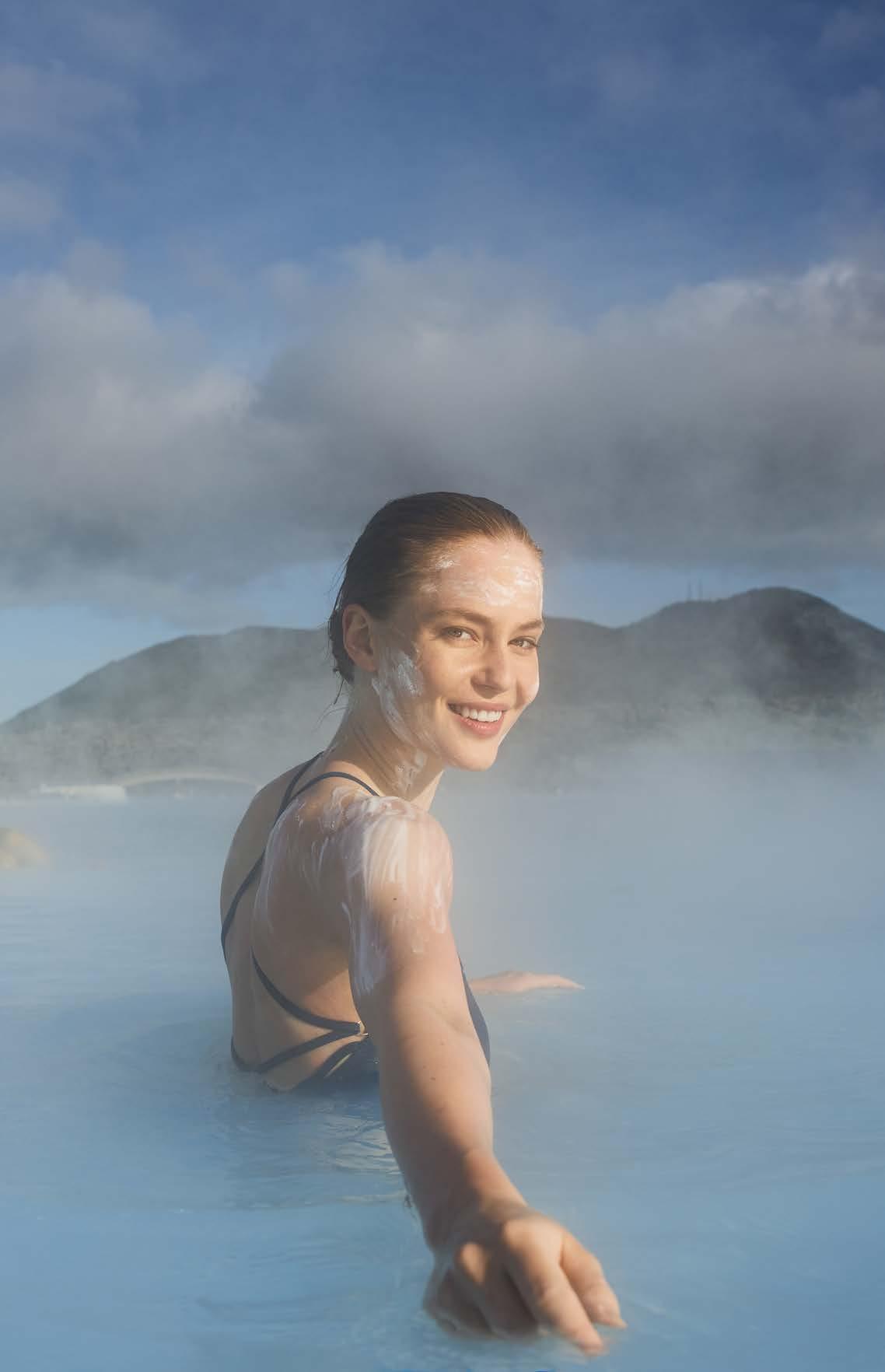The Reykjavík Grapevine
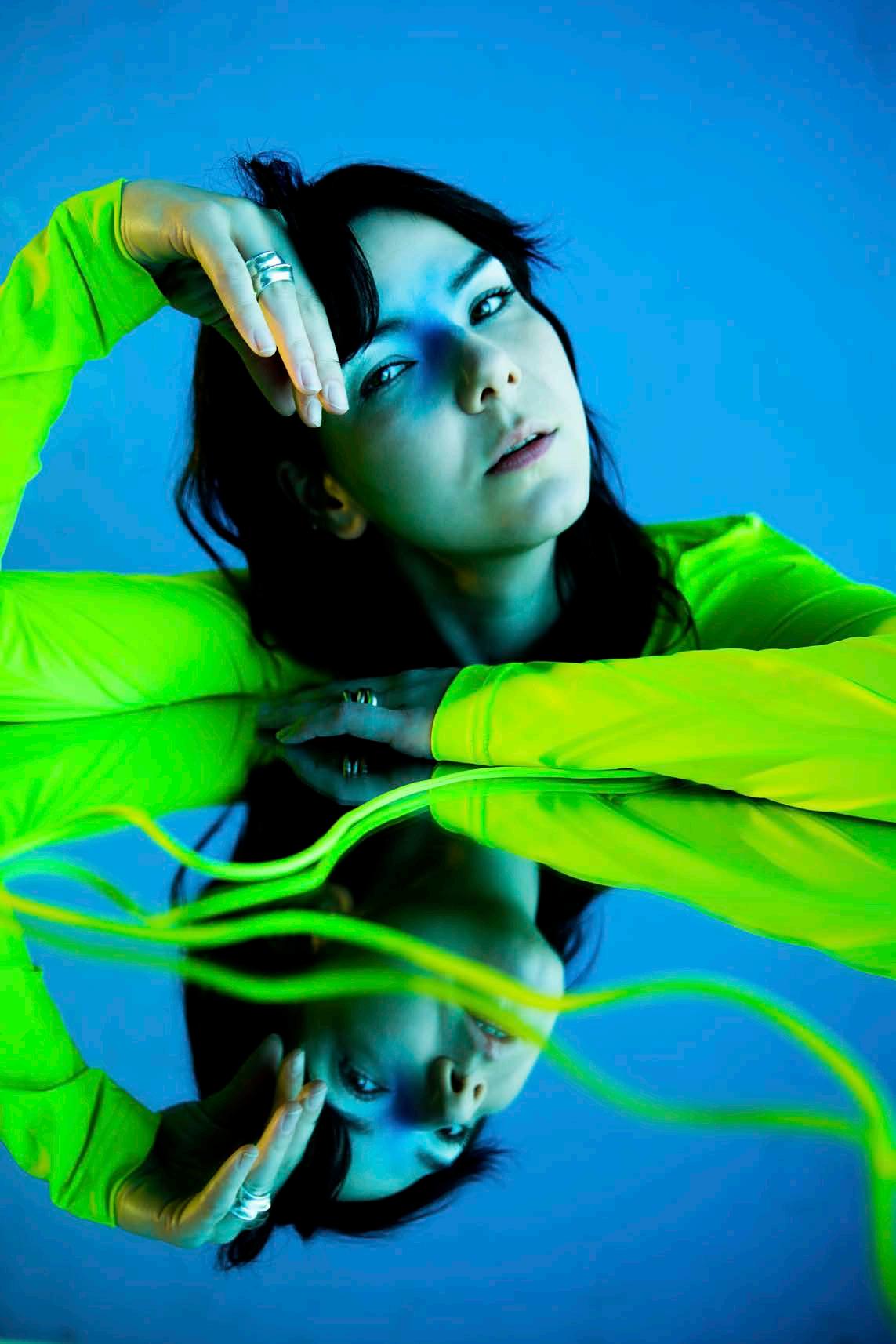


COVER & FEATURE IMAGES

Anna Maggý Grímsdóttir
MAKEUP Sunna Björk
WORDS Catharine Fulton, Editor in Chief
CATHERINE MAGNÚS DÓTTIR
Catherine studies culture and literature in Iceland and came to the Grapevine for the internship but ended up freelancing for the magazine. When she’s not trying to reconnect with her Icelandic roots, she’s usually watching video essays or attempting to finally come up with that one good story idea that she can actually finish writing.
It takes time for a garden to grow. You can sow seeds or rehouse plants into waiting soil, but for the seeds to germinate or the plants to take root and flourish in place is a process. Just like the musical evolution of our cover star Nanna Bryndís Hilmarsdóttir. As she tells Jóhannes Bjarkason on Pages 12–14, her musical aspirations first sprouted as a folksy singer-songwriter, before blossoming into an international superstar with her band, Of Monsters and Men. Now Nanna’s solo effort, How To Start a Garden, sees her return to the earth and to her roots – only it’s something entirely new and special.
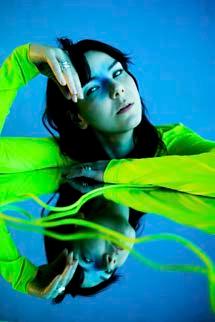
While streaming Nanna’s new album, flip to Page 6 for a lesson on the world tree from Norse mythology, then on to Page 32 for a delicious review of the succulent seafood at Brút, and then back to Page 16 to learn about a textile designer transforming sweaters from trash to your new friends. Life isn’t always a straight line and there’s no rule you have to read the Grapevine in a linear fashion either.
It’s the perfect time of year not just to be musing about starting a garden and watching the slowmotion explosion of green leaves and vibrant petals that will come with time and tending, but for being creative and unleashing your creativity on your environment. As I write this, the annual DesignMarch festival is in full swing, filling the city with creativity and innovation. It’s inspiring to see the ideas that spill forth from the country’s creators, designers and thinkers. There’s beauty and hope in it all..
JÓHANNES BJARKI BJARKASON
Jóhannes Bjarki is a Reykjavík local, straight out of Grafarvogur. Having been active as the frontman of the post-punk band Skoffín and in the post-dreifing art collective, Jóhannes is fascinated by the Icelandic music scene. Among his interests are politics, history and pop culture.


IRYNA ZUBENKO
Iryna is a Ukrainian journalist working at the cross-section of media and technology for the past five years. While still figuring out what to do in life, Iryna’s love of travelling, unspoiled nature and Scandi design has brought her to Reykjavík. One day she’ll write a non-fiction book.


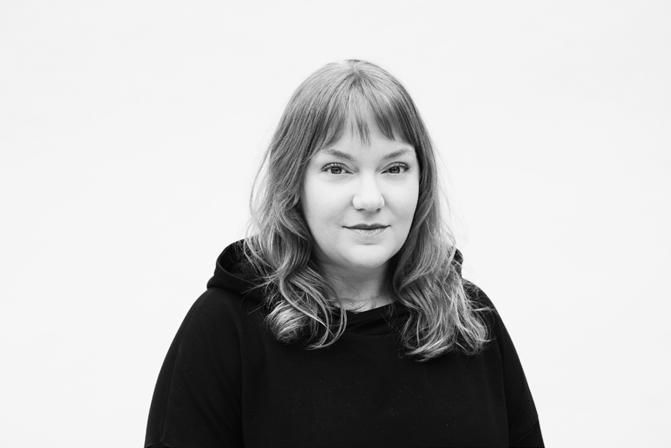
RAGNAR EGILSSON
A Hafnarfjörður boy made good, who has followed the Grapevine from its inception like a bad rash. Ragnar is a committed hedonist who spends his time arguing about food and drink, when he isn’t grinding away at his day job as a freelance translator and copywriter.

SHRUTHI BASAPPA
Shruthi Basappa traded the warmth of Indian summers for Arctic winds of Iceland. She’s a food enthusiast masquerading as an architect at Sei Studio and loves obsessive attention to detail. When not leading our Best of Reykjavík food panel, Shruthi can be found trying to become a Michelin restaurant inspector.




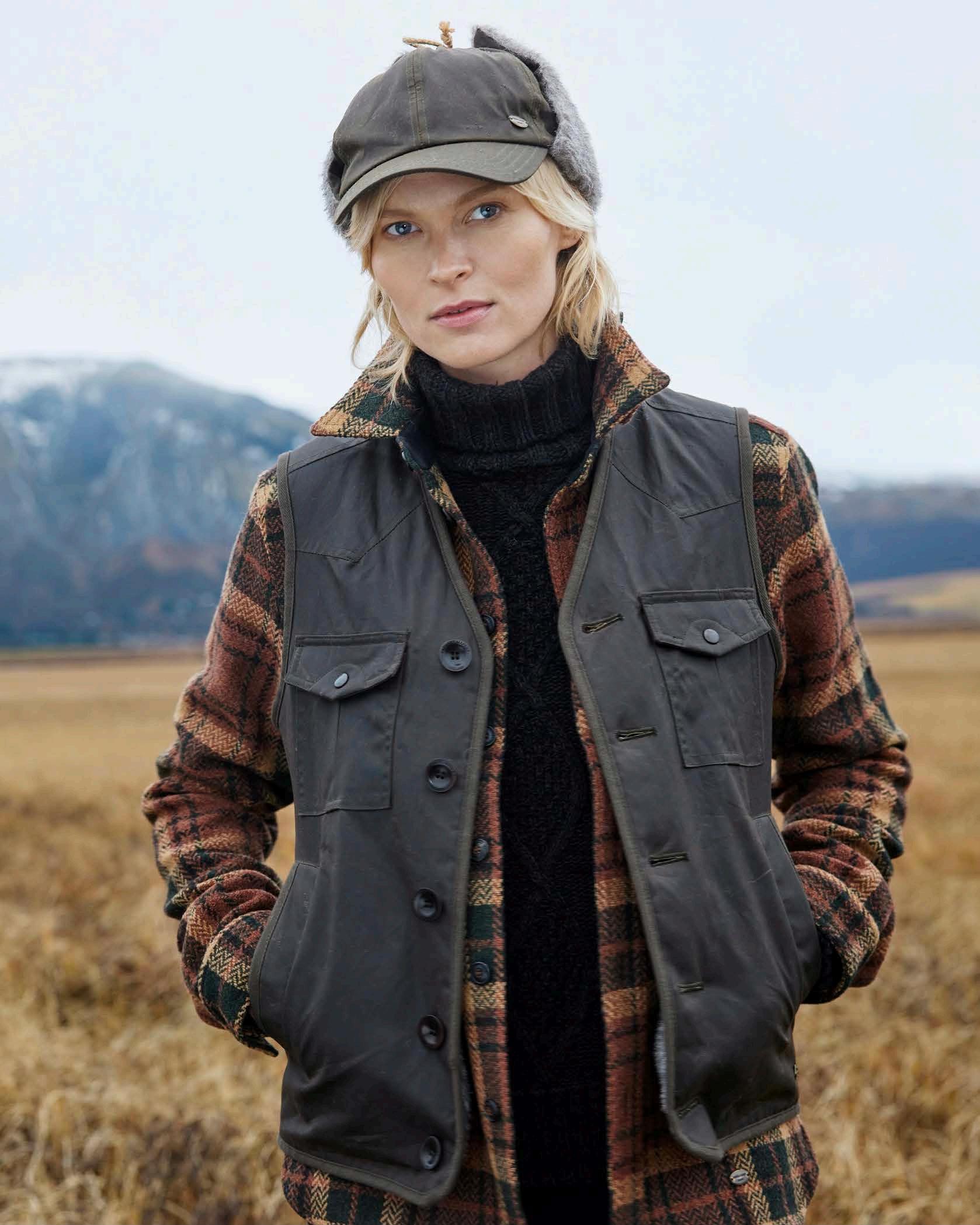



doesn’t count) – and one area people are largely focused on is greening their transportation.
As Iceland prepares to nix its reduced VAT on electric vehicles, a government report on taxes and incentives regarding environmental affairs proposes that Icelandic households in the lowest income brackets receive subsidies to purchase electric vehicles. It turns out the reduced VAT primarily benefited the 10% of earners in Iceland.

A subsidy for electric vehicles isn’t a new idea floating around the halls of Alþingi. In March it was announced the government would extend 1 billion ISK in subsidies for car rental companies to purchase more electric vehicles. Rental companies have been behind the electric curve, with just 7% of the new vehicles they purchase being electric, compared to 58% of new vehicles purchased by individuals and 40% of vehicles purchased by other companies.
While the reduced VAT that has been in place to date extends to hybrid vehicles, the subsidy for rental companies – and, presumably, the equivalent for low-income households, should it materialise – will apply strictly to fully electric vehicles.
Heimildin ran the numbers for a hypothetical rental period of June 16 to June 23. The cheapest option available from a rental agency stationed at the international airport in Keflavík was a Toyota Aygo from Blue Car Rental for 79,000 ISK. The cheapest electric vehicle rental, an Opel Corsa, was also from Blue Car for 88,000 ISK. The cheapest electric vehicles from Avis and Hertz in the same rental period cost 163,000 ISK and 189,000 ISK, respectively.
By comparison, Icelanders chasing the sun in Gran Canaria can zip around in an electric Fiat 500 for just 28,000 ISK. An electric Renault Zoe can be rented in Copenhagen for 43,000 ISK – 100,000 ISK cheaper than the same vehicle from Höldur car rental in Iceland – and a Volkswagen ID.3 can be rented for just 53.000 ISK for a week of seeing the sights in London.
Why are electric rentals in Iceland so fucking expensive? We’ll be watching the rental companies in the coming year to see if that 1-billion infusion actually benefits renters in any way, though we’re not holding our breath.
Skólavörðustígur 7
Skólavörðustígur 12
Kringlan Harpa
Flugstöð Leifs Eiríkssonar
GIVING LOW EARNERS THE RENTAL COMPANY TREATMENT
There’s a great deal of emphasis placed on individuals taking personal responsibility for their own environmental footprint – though, let’s be honest, we’re riding the carpool lane to extinction until corporations are forced to make some real changes (planting a few trees
The investigative journalism gurus at Heimildin ventured into news you can use territory on May 1, with a comparison of the cost of renting a vehicle in Iceland versus in some of Icelanders’ favourite travel destinations. It should come as a surprise to absolutely no one that, much like everything else on this wind-beaten rock, renting a car in Iceland is stupidly expensive.
STORE MANAGER Helgi Þór Harðarson helgi@grapevine.is
FOUNDERS Aldís Pálsdóttir Hilmar Steinn Grétarsson Hörður Kristbjörnsson Jón Trausti Sigurðarson Oddur Óskar Kjartansson Valur Gunnarsson
From electric vehicles to electric scooters, it turns out inebriated people are getting banged up in high numbers riding electric scooters home from the weekend djamm. RÚV reported on May 1 that electric scooter accidents were the most common traffic accidents, following car accidents, leaving the good ol’ fashioned bike as the only safe way to drink and ride.*.
*The Grapevine advises against operating any vehicle under the influence of alcohol.
PRESS RELEASES events@grapevine.is
GENERAL INQUIRIES grapevine@grapevine.is
Bicnick Jenny Retschkowski Joana Fontinha PODCAST & LISTINGS EDITOR Rex Beckett

Jörundsson adalsteinn@grapevine.is
CONTACT US EDITORIAL editor@grapevine.is ADVERTISING ads@grapevine.is DISTRIBUTION & SUBSCRIPTIONS distribution@grapevine.is
ICELANDIC LAMB IS THE FIRST ICELANDIC FOOD PRODUCT TO BE PDO-MARKED
Icelandic lamb has acquired the PDO label, the highest level of geographical indication in Europe, placing it in the company of the world's best-known and most sought-after quality products.
 Magnúsdóttir
IMAGE Art Bicnick
Magnúsdóttir
IMAGE Art Bicnick
Mythology is kind of quirky. A lot of the elements people came up with to explain the universe seem really random. Like a squirrel that runs up and down a giant magical tree that connects different worlds. Where did it come from? What is it up to? We went to Gísli Sigurðsson, folklorist and Head of the Department of Ethnology at the University of Iceland, for an answer.
Snorri Sturluson’s pupil in the 13th century spending time in his hot tub and someone starts telling you this story of the World Tree in the sky, white-ish and half transparent, the only white trunk in the sky is the Milky Way.”
Studies in Ethnoastronomy and Archeoastronomy have explored how cultures interpreted the night sky and formulated stories from observing movements in the sky that are visible to the naked eye.

it seems. Although we have a reference in the poetry that he is a marker to find the door to Valhalla.”
Wolves also play an important role in the mythology and the open jaw of one can be seen in the V-shaped Hyades constellation, trying to devour the sun on its path. “The sun moves just above it and in front of it in June, escaping the wolf’s mouth once a year, giving reason to celebrate,” Gísli explains.

WORDS Catharine Fulton
IMAGE Art Bicnick
The World Tree (aka the Ash of Yggdrasil) is described in the Edda as spreading its branches over the world and extending across the sky, connecting to different worlds.
“It is described as a white tree trunk that gets its colour from the white mud that the three norns pour over it from the well of Urður,” Gísli explains. “And everything that gets this white mud on it becomes white-ish and transparent like the membrane inside the shell of an egg. So, if you’re
According to Gísli, “this description in Snorri’s Edda fits quite well into that ideological framework. Because the text clearly tells us that everything is in the sky.” In Norse mythology, we find descriptions of an eagle (aka Aquila) at the top of Yggdrasil and a dragon called Níðhöggr gnawing at one of the roots, which might be the Scorpius constellation. Gísli gives some examples of animals in Yggdrasil and what they do:
“The swans are just swimming around, being white, because of the white mud they’re swimming in. Then there is this goat living on top of Valhalla’s roof and gnawing and eating the leaves and filling the major function of providing mead for day long drinking for the Aesir. The eagle is just hanging around
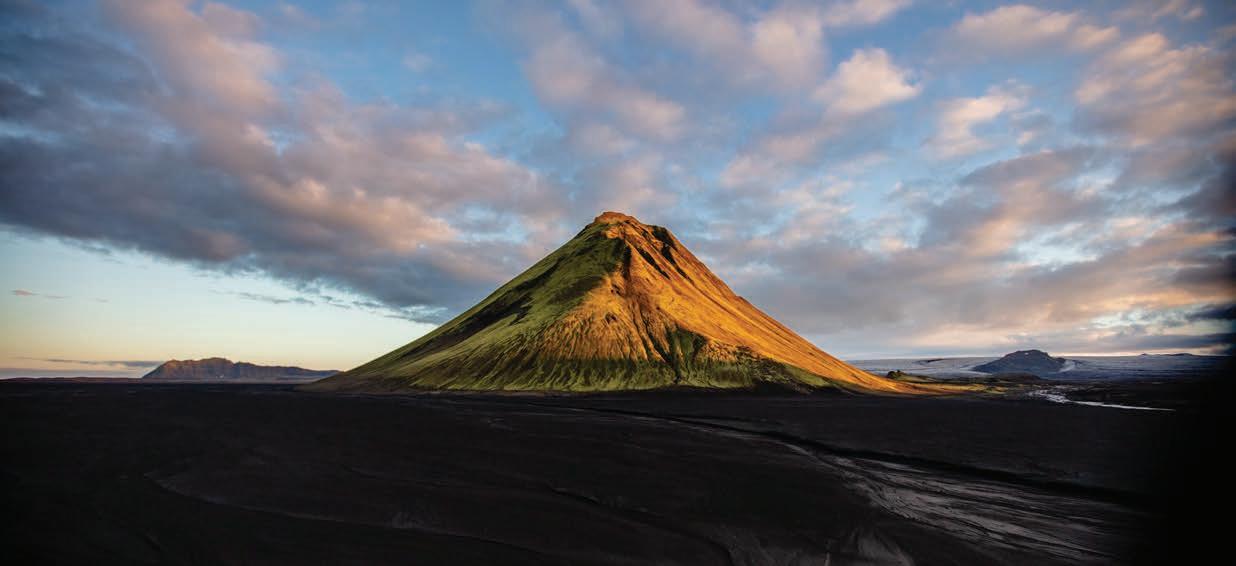
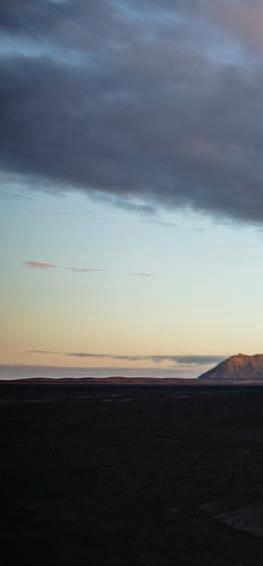


And then there’s Ratatoskur, the squirrel running up and down the tree, spreading shit talk of the eagle and the dragon – like an unlucky child of divorce, but often characterised as a bit of a trickster enjoying the drama. One explanation for the squirrel in the World Tree is that it could have been seen and interpreted in what we know as the Lacerta constellation. Meteor showers occurring within this constellation might give the impression that it’s moving, like a squirrel dashing up and down the tree trunk, aka the Milky Way.
Or as Gísli puts it: “You see some visible phenomena in the sky and then you tell a story about it to explain why it appears to be moving and that’s why it’s a squirrel running up and down.”.
So you’ve been gigging, freelancing and contracting and figure there’s got to be a more professional way to organise yourself – not to mention a slightly more lucrative way to manage your salary and taxation. Consider establishing an einkahlutafélag, or ehf.
We turned to accountant extraordinaire Jóel Kristinsson, owner operator of Bókarinn þinn í Skýinu, for the step by step of registering a new private limited company.
The first must have is a kennitala. If you’re an Icelandic resident or citizen, you’ve already got that 10-digit number. The second must have is your rafræn skilríki (electronic ID) to log into your account on RSK.is. From there, it’s just as easy as clicking “Almennt” (general) in the main menu, followed by “Nýskráning” (new registration) under the “Fyrirtækjaskrá” (company registry) heading.
Finally, click “Stofna nýtt einkahlutafélag” (create a new private limited company), fill in all the required information – including the name of your company, the type of business it’ll conduct, the chairman of the board and the responsible accountant – as well as supplementary form RSK 17.27. Once all the paperwork is in order, you’ll receive a bill for 140.500 kr to your personal online banking account to cover the registration fees and your company’s new kennitala.
And bingó! You’re free to rack up debt and swap kennitalas like a real Icelandic business owner – just kidding, only massive assholes do that..




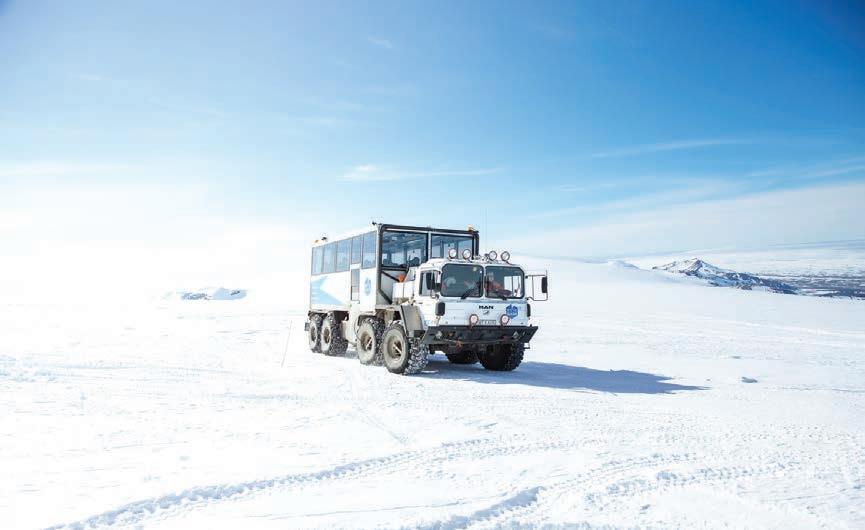

With a reputation for pushing boundaries and breaking down barriers, Gógó Starr has played a pivotal role in the flourishing drag scene in Iceland. In fact, she is credited as one of the scene’s pioneers, organizing shows that paved the way for a vibrant and diverse community of performers.
last name Starr was added later when I created my Instagram account.
Over time, Gógó has evolved from a loud and extravagant persona to a grittier, edgier version that’s less mainstream.
Through my experiences in the drag community, I’ve learned the importance of toning down my act to become more relatable to my audience, while still pushing boundaries to keep things interesting. My drag character has taught me a lot about self-love and acceptance, which has had a positive impact on my personal life. Sometimes I find myself inadvertently reacting as Gógó in my daily life, blurring the line between my on-stage persona and my authentic self. But ultimately, playing the character of Gógó is an exhilarating experience that I relish and continue to refine through practice.
LOUD AND PROUD
However, I didn’t let that stop me from experimenting and watching YouTube tutorials until I found the best techniques that worked for me. Through practice and trial and error, I learned to identify the products that best suited my skin type and adapted my routine to fit any situation.
I founded a group of talented individuals that eventually developed into a monthly show, and later progressed to bi-weekly performances. Our show focused primarily on drag, but also encompassed a range of queer variety performances.
competition with just the Nordic competition. It was a small show with some of my friends. For the first time in my life, I felt like I was acting really feminine and doing something that felt so natural to me, and being celebrated for it. As an entertainer, it felt like such a liberating art form because you can do anything. You are creating the art, you are the art. You’re directing the art, you’re celebrating, like it’s so many different things all in one package.
newcomers and welcome them as your own children. This is why I already have grandchildren, some of whom are even older than I am.
UNLEASHING YOUR INNER MUSE
In 2009, my drag character made its debut as part of a school play. By 2011, the character had taken on a life of its own, and I named her Gógó. For me, letting go of my drag persona felt like releasing a part of myself that had been suppressed for too long. The name Gógó was inspired by Lady Gaga, whom I admire, and the desire for a name that captured both my Icelandic heritage and stage presence. The
My journey as an event producer began in 2013. My involvement in theater during high school led me to organize events for them, and eventually, competitions. The joy I found in organizing those events sparked an interest in creating shows with an audience. Since then, my experience has grown, and I am now a skilled producer for various arts festivals. I had to learn everything on my own, starting with buying skincare products based on their appearance.
From there, we gained momentum, expanding into a monthly production and eventually launching Drag Lab for more grassroots and experimental performances. Our collaboration with Pride further increased interest in drag, which we believe is currently in a renaissance or golden age. While we acknowledge the possibility of a future decline in drag’s popularity due to a general queer backlash, we remain committed to standing up and fighting for our community, especially those of us who are loud and proud. Unfortunately, the project ended in August last year, but we still have little events.
GRANDMA GÓGÓ
I didn’t really think about it at first, but I started drag out of curiosity. I hadn’t watched “Drag Race” yet when I started. I just tried on some glitter and started being fabulous. Then, we did a little show that was a spoof of the “Drag Race”
I believe that only one person from our original group still performs in drag. At the time, we were mostly just experimenting and not taking it very seriously. However, my perspective changed when I participated in a direct competition, and winning inspired me to pursue drag more seriously.
In 2011, I competed in my first drag competition, and although my girlfriend at the time still performs as both a drag king and a drag queen, many of the original cast have moved on. I find the Icelandic drag scene to be particularly inclusive and diverse, as the art form is accessible to anyone regardless of gender or body hair preferences.
The community I belong to is truly remarkable. Although my fiancé is not interested in pursuing drag himself, he is always willing to lend a hand in preparing for our shows. Although I have managed to dress him up once or twice, he does not share my enthusiasm for drag. In our community, it is customary to “adopt”
I believe that drag is inherently political because it challenges societal norms and critiques the current atmosphere by allowing individuals to dress up as something they are not supposed to be. It is a constantly evolving and creative way of interacting with the world, and I consider it a form of art. However, as a creative, I have experienced moments where I feel overwhelmed and lacking in inspiration. This is common among most creatives, as we often reach a point where we feel like we don’t know what we are doing. In my case, as I get more bookings, I tend to do more of the same numbers, but this is not always possible when the audience is the same people who come to the shows again and again. Thus, I am constantly challenged to do something new and push myself creatively.
I usually find inspiration in a concept first, whether it’s a new costume piece, a new wig or a song that I want to perform. I particularly enjoy doing funny acts and physical humour and often switch up the song to be something else. One of my craziest performances was based on Baywatch, where I hired some dancers and got us some sexy outfits. It was different from anything I had done before and it became a hit..
WORDS Jóhannes Bjarkason
IMAGE Art Bicnick
We’re living in a decaying system under capitalism. When you tire of interacting with people through screens, it’s time to look inward and reach out to your neighbours and community members for connection. This article is the first in The Neighbourhood Watch – a series focusing on the individuals and groups working to benefit their local community.

a mechanic directs me to the silos.
“Señor Birgir is over there.”
FREEING THE CHILDREN Birgir Birgisson is a member of the cycling group Reiðhjólabændur, or Bicycle Farmers, a community organisation of cyclists who initially met for group rides around the city but, since the summer of 2022, has centred their focus on collecting and repairing bicycles to be redistributed to marginalised groups.
Reiðhjólabændur has recently teamed up with the Icelandic chapter of Save the Children to supply children and their families with bicycles, in addition to the asylum seekers, refugees and low-income individuals they had already been supplying.


Birgir fronts most of the day-to-day operations, collecting used bikes from all over town, organising the
Having noticed the amount of work put into the project, I wondered what brings a person to devote such time and effort to it. “I am so full of energy and need to direct it somewhere. I want to put it towards constructive initiatives and projects that are useful,” Birgir answers me. “I want to do something related to working with people, and you can’t find more grateful people in the world than refugees and those marginalised in our society,” he says.
After some time chatting outside, Birgir ushers me into the workshop The floor is crowded with mobile workbenches and tools, the walls reverberating with the chatter of people at work. Birgir brings me further into the building to a corner of plush armchairs and sofas arranged around a TV. “We’re trying
Cycling up to Sævarhöfði 31, I am greeted by two silos stretching up to the sky and scores of bicycles lined up in neat rows. Gone are the days of cement production at this warehouse on the outskirts of Reykjavík. Instead, the site has been taken over by cyclists, volunteer mechanics and community organisers. I pull up on my bike in search of Birgir Birgisson. Asking the volunteers where I could find him,
workshop and sometimes even delivering bikes to their new owners.
“We acquired our first bikes when a person contacted me saying their building council’s spring cleaning uncovered a dozen bicycles not claimed by anyone,” Birgir says.
Birgir is quick to point out the number of bikes they have since refurbished. “We’ve repaired hundreds of bikes,” he tells me. “In that shed,” Birgir says, pointing to a shack connected to the defunct silos, “ there’s probably close to 200 kids’ bikes.” Birgir’s passion for twowheeled autonomy shines through.
“There is no other object in the world that increases a child’s freedom to travel. A bike expands their worldview and empowers them,” he says.
to get a Playstation working because some of the volunteers bring their kids with them,” he tells me.
As we return to the main working space, a man approaches with doughnuts and wishes Birgir a happy birthday. “It’s your birthday?” I ask, surprised. Before Birgir replies, the gathered volunteers start singing “Happy Birthday” in English, Spanish and Icelandic. I happily lend my voice to the chorus..
Join the fun by checking out the Reiðhjólabændur Facebook group and attending the weekly workshop nights – every Monday from 18:00 to 21:00 at Sævarhöfði 31. Everyone is encouraged to show up and lend a helping hand – prior experience is not necessary.
Reiðhjólabændur brings bike power to the people
There is no other object in the world that increases a child’s freedom to travel. A bike expands their worldview and empowers them.
WORDS E lías Þórsson
IMAGES Art Bicnick
One of the most iconic scenes in Icelandic cinematic history plays out in the 2000 film Englar Alheimsins (Angels of the Universe) It depicts three main characters enjoying a lavish night at Reykjavík’s most luxurious restaurant, gorging themselves on expensive food and wine before being presented with a bill they have no hope of paying. Instead, the trio informs the waiter, “we are patients at Kleppur, please be so kind as to call the police.” No further explanation was required.
For over a century, Kleppur has been synonymous with mental illness. At the turn of the 20th century, authorities felt the nation’s psychiatric problems were so severe that something drastic had to be done. Thus, in 1907 and for the first time in the country’s history, the state financed the construction of a healthcare facility. In that way, Kleppur became the building block of the Icelandic welfare state. It is where Iceland’s mentally ill are treated to this day.
SLAVES IN CAGES
“Before Kleppur, the mentally ill were kept in cages or boxes, or on a leash,” says psychiatrist Óttar Guðmundsson, who has published a book on the history of Kleppur.
“They would be auctioned off by the state to the farmer who was willing to take them in for the least amount of money. These people would often be forced to slave away for their guardian.”
Neighbouring countries had established facilities for the mentally ill two centuries earlier, but, as with so many things, Iceland remained far behind cultural and technological progress.
“Kleppur represented incredible progress in the care of the mentally ill,” says Óttar. “Patients would now be treated humanely and have a place to stay. However, as there was no medicine to treat patients at the time, people would often be stuck

there for years – they had nowhere else to go.”
WATER TREATMENT
Quack medicine and authoritarianism dominated much of 20th century mental health care. Until 1930, when Kleppur’s current main building was opened, the hospital was run by Þórður Sveinsson. He had studied psychiatry in Munich, but was more New Age shaman than scientist. In fact, he shunned medicine and believed in the power of water treatment, administering 55 degree Celsius water, hot baths and even exorcisms.
“I don’t think Þórður ever wanted to be a doctor, he was much more interested in politics, Greek and Latin,” says Óttar. “His water treatments weren’t used in any big European psychiatric hospitals. He also employed psychics and believed that ‘beings on a lower plane of existence’ caused psychiatric problems.”
It was a watershed moment in
Icelandic psychiatric treatment when Helgi Tómasson was appointed chief physician in 1930. That didn’t mean superstitious Þórður was out of the picture. He was popular, a published poet with a Danish wife and, most importantly, an influential member of the Independence Party. Instead, the hospital was split in two. Þórður continued to administer water and employ mediums in the older building, while in the new building Helgi introduced the latest methodology in psychiatric treatment.
Not long after Helgi’s appointment, however, the biggest political firestorm of the 20th century would damage his reputation and, by proxy, that of Kleppur.
THE BIG BOMB
For much of the 20th century, Icelandic society was dominated by the Independence Party and the Progressive Party. In 1930, Progressive Party Chairman and Minister of Justice Jónas frá Hriflu
Before Kleppur, the mentally ill were kept in cages or boxes, or on a leash.
was one of Iceland’s most influential and controversial people. Among his responsibilities was the appointment of doctors and he had become deeply embroiled in a fierce debate with the Independence Party-dominated doctor’s association.
Curiously, Helgi, a lifelong member of the Independence Party, decided to dive head first into the debate,
declares that Jónas is insane and needs to come with him to Kleppur,” says Óttar. “It’s an unbelievable lack of judgement, a doctor can’t just decide someone is mentally ill without examination.”
In retaliation, Jónas publicised Helgi’s housecall in a scathing critique of the healthcare system entitled “Stóra bomban” (“The Big
drunk. This completely paralysed Kleppur until Jónas stepped down as minister of justice a few years later and Helgi was reappointed chief physician.
In the years that followed, Kleppur became a polarising and highly politicised institution – much to the detriment of the nation’s mental health. The Independence Party came to view the hospital as its own, while members of other political parties viewed it with suspicion.
Over the years, Kleppur became a physical manifestation of prevailing prejudices. A lexicon of slang formed around public perception of Kleppur, with the terms used to such an extent that they were entered into the dictionary; kleppsmatur, klepptækur, kleppsvinna and kleppari are used, respectively, to describe inedible food, someone who needs to be locked up, meaningless work and a crazy person.
But it wasn’t just prejudices that contributed to Kleppur’s poor reputation – stories of the harsh methods that dominated 20th century psychiatric care didn’t help. People who were committed also tended to disappear into the institution for years without any connection to the outside world. There are even stories of the coffee being spiked with sedatives to keep patients docile.
decades, in turn helping to create a more positive image of Kleppur.
“I started working here 30 years ago and the attitudes in society have changed a lot since then,” says Eyrún Thorstensen, head of the department for addiction and security. “Back then patients would feel stigmatised if they were to be treated at Kleppur. But the prejudices are not nearly at the same level today.”
Much has changed for the better at Kleppur in recent decades, but the work of its staff is often hindered by an edifice purpose built to house patients rather than treat them. Narrow, windowless corridors, shared rooms and a low ceiling painted an acidic shade that one former department head called “psychosis yellow,” all feel counterproductive to fostering good mental health.
“This house is cramped and does not meet the requirements of a modern psychiatric ward,” says Díana Liz Franksdóttir, department head of the mental rehabilitation ward. “We have often felt that our patients don’t receive the same level of service as many others.
Much of the amenities here are worn and old – we’ve even had to purchase furniture from flea markets.”
When Kleppur was constructed, it was far from Reykjavík and surrounded by farmland. Today, it is flanked by an industrial estate and the country’s biggest harbour. Remarkably, its grounds have been spared the urbanisation that claimed surrounding farms. However, Kleppur’s design means just going outside is complicated and requires staff escort through labyrinthian corridors.
“There is a lot we can’t do as well as we otherwise could because of the building,” says Eyrún. “It can be quite frustrating working here, because of how sadly lacking the facilities are for our patients. A good environment and a well designed building are vital to the improved mental health of patients. I think many patients find it hard to stay here for long, because of how lacking the building is.”
Speaking to staff and patients in those narrow corridors with their “psychosis yellow” ceilings, you get the sense that the sentiment is shared by everyone who spends their days at Kleppur.
A SYMBOL OF A NATION’S MENTAL HEALTH
and attempted to use his authority as a psychiatrist to diagnose the minister as insane.
“One night Helgi decides to visit Jónas at his home. There, he
Bomb”). Helgi then pointed to Jónas’ over-the-top reaction as further proof he was unwell. Still, Helgi was fired and replaced as chief physician of Kleppur by a man who was both a subpar doctor and a terrible
“I first came here in 1975,” a patient at the closed psychiatric ward tells me while watching a live broadcast from parliament. “There have been many sadists who have worked here, but the culture has changed drastically and now it’s better to be here.”
Society’s attitudes regarding mental illness have also changed in recent
Construction is currently underway on a new multi-billion króna hightech national hospital. Curiously, a new psychiatric ward is missing from the blueprints.
“You could say that the omission of a psychiatric ward in the new hospital’s design is a reflection of the government ’s attitude towards mental health services,” says Díana. “The biggest challenge we are faced with today is the building itself.”
It’s easy to read into the fact that the first medical institution funded by the Icelandic state was a psychiatric hospital. “It is definitely possible to philosophise about that,” says Óttar. Perhaps the constant oscillation between endless summer sunshine and eternal winter darkness is conducive to a manic national character, or maybe only a Norse madman would choose to settle in 9th century Iceland.
It seems equally indicative of government priorities today that the biggest healthcare investment in Icelandic history makes no space for the mentally ill..
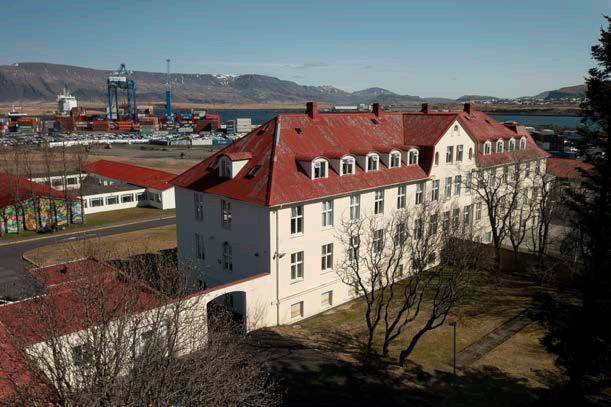

It wasn’t just prejudices that contributed to Kleppur’s poor reputation, but also the stories of harsh methods that dominated psychiatric treatments of the 20th century.
main hub for the city’s fishing operations, it is now a gentrified landfill with two streets running parallel, separated by a row of refurbished fish-freezing plants. Afraid the furious North Atlantic winds might blow the phone out of my hands; I dial a number and tell the voice on the other end I’m outside our
of knowledge about 90s fashion brands, but apparently everyone and their grandmother had a Don Cano piece – even former president Vigdís Finnbogadóttir.
Ascending a dark stairwell leading to the second floor, Nanna’s studio space is flooded by sunlight
My first memory of Nanna is from 2010, when I was 14 years old and participating in Músíktilraunir, Iceland’s annual battle of the bands. As luck would have it, we played the same night of the semi-finals. Then in her early 20s, Nanna was unaware of the impact her participation in the contest would have on her career.
A previously unknown band, Of Monsters and Men won the competition and ultimately blew up the following year with the release of their debut single “Little Talks.”
ent sound, texture, song structure and brand being mediated through this ‘new’ outing. After my conversations with Nanna, however, I have changed my mind. Although stylistically different from her band’s offerings, this new chapter in Nanna’s career doesn’t seem to be a new direction or a start of something different. As she explains, it’s a continuation of her earlier songwriting efforts; an extension of herself. “It was really a bit of a dilemma. I found it very difficult to call it a solo project,” she confesses.
Ireach for my phone outside an old industrial building in Reykjavík’s Grandi neighbourhood. Once the
rendezvous point. Nanna Bryndís Hilmarsdóttir swings open a steel door, a smile on her face, and invites me in. She tells me the space used to be the warehouse of outdoor apparel brand Don Cano. My reaction likely betrayed my utter lack
streaming through the wall-to-wall windows. I admire her instruments, which lay strewn across the room as wind kept blowing outside, noisily battering the windows.
Now, all these years later, it’s the impending release of Nanna’s debut solo album, How To Start A Garden, that brings us together.
Before meeting with Nanna, I was content calling her solo project a new direction for the artist. On the surface, there’s a completely differ-
Before embarking on an international adventure with Of Monsters and Men, Nanna wrote and performed under the moniker Songbird. In her sleepy hometown of Garður, at the very tip of the Reykjanes peninsula, the folksy singer-songwriter played around with music that she incorporated with her love of ghost tales. “I was an extremely dreamy child and

I find the moments you have with yourself so beautiful. I think so many things happen when you’re by yourself.
spent a lot of time in my own world. I just played out in the fields making up stories,” she tells me.
After moving to Reykjavík around the age of 20, Nanna worked at a video rental shop while studying at the Reykjavík School of Visual Arts. It was then that Nanna met Ragnar Þórhallsson, who introduced her to her future OMAM bandmates just in time for that fateful Músíktilraunir. “Something clicked,” she tells me. “I guess I was a bit shy, performing on my own,” she says when asked about the allure of forming a band. “I’ve always found it entertaining to play with other people and the result of people being excited together ends up being better, in a way.”
With no conscious plan for OMAM to release a record, the band gained experience playing various Reykjavík clubs, simultaneously finding and developing their sound. This
nonchalance is representative of many Icelandic bands of the same time – the lack of an established music industry in Iceland left many artists with total creative control.
That’s largely the case today.
OMAM’s debut album, My Head is an Animal was released a year and a half after their Músíktilraunir victory and quickly rocketed them
perplexed by its success, “Suddenly, something happened abroad. Out of nowhere, a bunch of people had heard it on the internet. I have no idea how any of this happened.”
away from their humble beginnings.
Subsequently, their breakout single “Little Talks” went on to rule airwaves around the world – its current Spotify numbers show it’s been streamed more than 860 million times. To this day, Nanna is
OMAM had developed into the superlative. Maximalist shows, extroverted performances and grandiose instrumentation all became a part of their presentation – a far departure from Nanna’s more introverted roots. As she tells it, How To Start A Garden is a return to her comfort zone.
“[In this] world I created, you’re sort of in your bedroom, completely engulfed by your own world.”
Monsters – as Nanna calls her band – is the complete opposite of her new project. For Nanna, OMAM’s performances are all about emphasising her extrovert tendencies, riling up the audience through a riveting show. “In a way, I also think that’s a big part of me, something that the band brought out in me. Because I’m usually not like that. I like the calmness. Before all this success I was just an emo kid,” she says, poking fun at herself.
Nanna thrives in between these contradictions. “I’m very attracted to opposites. I feel a need to mirror myself against something.” A good example of this attraction is the song “Phantom,” originally a Songbird tune and re-released on the 10th-anniversary edition of My Head is an Animal. Written by a 16-year-old Nanna, the song had Nanna’s voice singing timidly and quietly. When dressed up as an OMAM effort,
the energy levels are ratcheted up. “When I’m with the band, I get into position. There’s some kind of power and energy I acquire,” she says.
On May 5, 13 years after forming OMAM, Nanna released How to Start a Garden. Though she’s undoubtedly a more confident, experienced and fully-fledged artist than her pre-OMAM self, Nanna clings to her singer-songwriter roots and her affinity for stories told in the depths of dark Icelandic winters.
Starting out her career as a solo artist, I wondered if this was a nod to her past. Having founded one of Iceland’s most successful bands, what’s motivating her to present herself as a stand-alone artist? When I posed this question, we had been chatting for some time, with many cups of coffee between us.
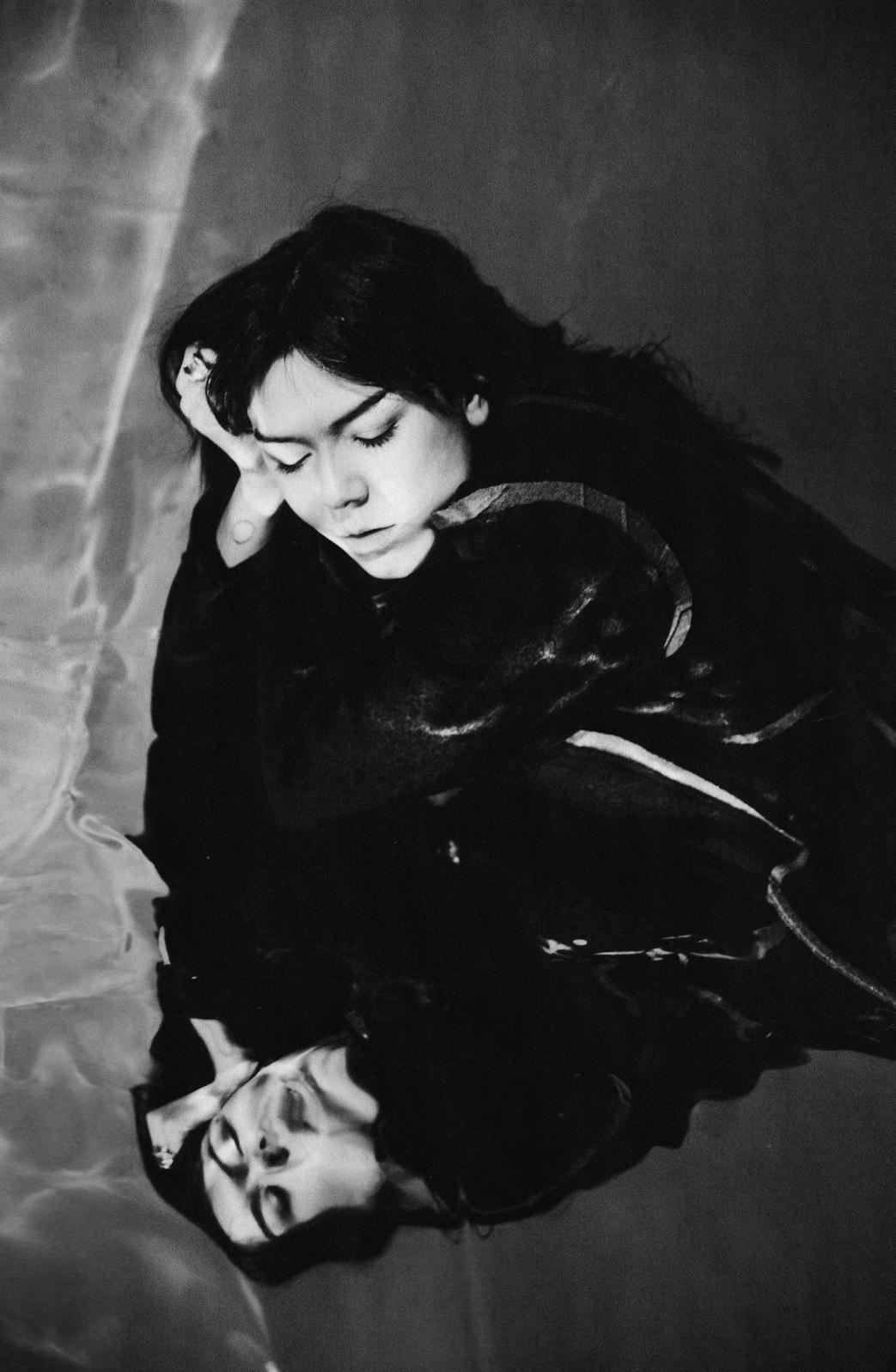
I like the calmness. Before all this success I was just an emo kid.
“I have been thinking about this a lot,” Nanna tells me before jumping on her feet and fetching still more caffeine. “First of all, when I started working on the album, although I left it to happen organically, I had a strong idea about the concept. When you work as part of a group, you’re working as a group,” Nanna emphasises. “You don’t control everything and that’s the beauty of working in a group, but also the challenge.”
The idea of returning to a starker, more authentic display of herself had been lurking in the back of Nanna’s mind for a long time. “I thought to myself, ‘Now I’ve been in a band for a very long time,’ and I just found this desire to do my own thing,” she says. It wasn’t until 2020 that she found the opportunity to fully conceive of her new undertaking. “When COVID came, I thought it was time. Suddenly, I had all this time to start working on the album. In fact, I’m not starting anything, but visiting something that’s always been a part of me,” she tells me.
As all of us experienced in one way or another, the pandemic put a stop to our normal ways of life. For Nanna, that meant a stop to touring with OMAM. “It was like someone hit the reset button,” she describes to me. “Even if it hadn’t happened, I think I would’ve started working on the album. I even started working on it when we were touring. I have this very vivid memory of being in a New York hotel room on tour, actively working on the album. I don’t neces-
sarily know if the album would’ve taken more time or if it would’ve turned out completely different if not for COVID. Ideas were able to marinate and they reflect a specific time in my life; the last three years or so.”
The album, Nanna says, is about that in-between state – one pushed on us by a period of global flux, but also one that’s experienced on a smaller scale in our personal lives during times of change. “[On the album] you’re not sure where things are going. Everything’s at a complete stop,” Nanna explains.
While the album paints a picture of the standstill that both undecidedness and powerlessness create, the piece also evokes emotions of tumultuousness and movement – like driving past a series of signposts all pointing in the right direction. “It documents a specific time in my life, something of a limbo. Maybe because of COVID, but also because I was personally experiencing change,” Nanna says.
ALONE, NOT LONELY
How To Start A Garden was recorded at multiple locations, most notably in upstate New York and in Nanna’s cabin in rural Iceland. In New York, Nanna worked in the Dreamland Recording Studio, a picturesque 19th-century church-cum-studio. The album was produced by Nanna in collaboration with Aaron Dessner of The National and Josh Kaufman, a collaborator on The National’s previous works.
“The National is one of my favourite
things happen when you’re by yourself. Alone, but not lonely.”
The album’s opener and title track introduce that ambiguous feeling of the in-between Nanna refers to. In the song, Nanna explores a rapid change in sonic environments. With sound alone, she conjures up a lush green garden, with birdsong and fragments of conversation. To the cue of muted piano, the listener is quickly transported into the middle of a desolate winter.

“It’s that feeling of yearning and hope, but then you realise you’re back at square one. The question is asked, ‘How do you figure this out?’ And the answer is simply, ‘I don’t know,’” Nanna says light-heartedly.
Nowhere on the album is the answer found. It’s up to the listener to make sense of it for themselves. Philosophical underpinnings also characterised Nanna’s process, as she mentions stoicism being a major theme. The narrator finds herself ending up in a vortex that doesn’t seem to end. “To be stoic is to just allow yourself to swirl around. That can be positive and there’s a whole lot that comes from it,” Nanna tells me. Spectacularly executed, the opening track sets the tone for what’s to come.
Another track, “Sputnik,” is based on Nanna’s experimental tendencies during the recording process.
Although not an experimental song per se – the piano refrain reminds me of an old Sigur Rós track – “Sputnik” is the result of sampling laid over a simple piano melody.
“I find it very entertaining to make samples, so I was often recording all sorts of sounds wherever I was,” Nanna says.
“Sputnik” is produced with a collection of recordings made both in Dreamland Studios as well as in Nanna’s cabin. “Recording in my cabin had a big effect on me. You know how you get into the country?” she asks, not pausing for an answer, “You just get all muted like,” she continues.
made there. And the guitar, how soft it is.” With most of the instrumentation recorded in the grand church hall of Dreamland, you’d expect the album to feel bigger than it is. Instead the vocals feel very close to the listener, creating an intimate soundscape.
The album’s lyrics also reflect Nanna’s vision of intimacy. “I like lyrics that portray micro-moments. You’re not painting the whole picture, but rather zooming into a specific moment and speaking about something very particular. Like how to start a garden. I was in the middle of COVID and had this hope, this question of how to actually start a garden. I had recently moved into a new house and was watching my neighbour tending to his garden. I just found it so romantic and beautiful.
“When I started working on the song and the lyrics, it was winter. At its core, it’s about this simple question which is so loaded. I’m visiting some memories but also looking forward. Just at home looking out the window and thinking, ‘Wow, that’s a lot of snow.’”
This introspection is a major theme on How To Start A Garden, which Nanna confesses is one of her biggest achievements. “For me, this piece sums up pretty much everything I’ve learned on the way. As I see it, this is a project that will be a part of me from now on. It always has, but now I’ve opened it up,” she says.
Starting in July, Nanna is set to tour the U.S. with her session band, consisting of Icelandic musicians Magnús Trygvason Eliassen, Tómas Jónsson, Rakel Sigurðardóttir and Bjarni Þór Jensson.
I later learn that Nanna will be in New York during the weekend of her release. “That’s a secret,” she tells me when asked about the occasion, ultimately giving in due to her excitement. “OK, I’m playing Jimmy Fallon on May 3,” she confesses.
bands and it was interesting to have reached a peer-level status with my idols,” she tells me.
In her new solo outfit, Nanna addresses the individual in a sincere manner. You get the feeling Nanna has written these songs for you personally, as her calm yet powerful voice addresses the frailty
Nanna’s dog even makes an appearance in one track. “We were recording a song and my dog keeps walking around the room. We just let it stand as it were. We weren’t afraid of letting some of these sounds that were picked up stay in the final version,” she says. Even though the album’s subject matter ranges from sombre to serious, it’s Nanna’s earnest playfulness that ends up being one of the album’s key takeaways.
When asked how the session band is coming together, Nanna is clearly pleased. “I’ve been with [OMAM] for so long. Now, I’m joining another group of extremely skilled people and it’s so fun to develop something new together. I’m very excited about that cooperation. America can be a weird one, but I enjoy touring there, going to In-N-Out or something,” Nanna says with a laugh.
of being human, making mistakes and not knowing what to do. “On the album, I’m extremely relaxed and singing very softly. There’s a lot of room to manoeuvre.”
The solitary state of being that Nanna projects onto the album is also a reflection of its production process. As Nanna states, “When mixing the album, I went on long walks alone, late at night.” That feeling of solitude echoes throughout her music.
While listening, I got the sensation of Nanna being present in the room with me, strumming her guitar. Everything feels very close, like you’re on the verge of being sucked into Nanna’s garden of lonesome opposites. “I find the moments you have with yourself so beautiful,” Nanna muses. “I think so many
It’s how she phrases her words and the colourful explosions of small sounds embedded all over the album that exhibits her artistry.
HOW DO YOU ACTUALLY START A GARDEN?
“I’m going to play a bit more for you,” Nanna says, fetching her laptop. It takes her a while to find the correct file, while she’s also trying to organise her desktop folders. “I’m trying to find the best way to play this. I don’t know about you, but I’m not very organised,” she says and takes a bite out of her pain au chocolat as “Disaster Master” begins to play.
“This song is recorded in Dreamland and what’s so fantastic is that you can hear the space. It’s such a beautiful studio and it’s just a church. Everything’s warm and nice. You can hear every sound being
About the rumours circulating about OMAM’s disbandment, Nanna is clear: “I’ve heard people claim that the band has quit. We’ve never said that.” In fact, out of all the countless milestones the band reached, Nanna is proudest of its longevity, having been active since 2010. “I’m proud of the fact that we still have the drive to record music and release albums. Even today.”
“The band is far from over and we’re working on a new album right now, so I’ll be jumping between projects back and forth. And it’s so nurturing. I somehow thought it would become overwhelming, but I feel like I’ve become stronger with the band than I’ve been before.”
Released May 5 via Republic Records, How To Start A Garden is an honest portrait of the artist’s experiences of love, loss, ambiguity and contentment. It is an album that celebrates solitude and loneliness, while affirming that you don’t always need to know how everything will pan out. How To Start A Garden is an album that is deserving of the listener’s undivided attention, preferably while enjoying the beauty of a moment alone on a solitary walk..
The question is asked, ‘How do you figure this out?’ And the answer is simply, ‘I don’t know.’

May 9, 11 & 13
Eurovision season is upon us! Get your rocks off attending some of the many Eurovision parties happening around town. Semi-finals nights are May 9 and May 1 1, with the grand finale going down May 13 You must pick your fighter, as both Bíó Paradís and Gaukurinn will host splendid Eurovision screenings if you’re searching for a like-minded community of Eurovision-lovers – if you haven’t planned your own party, that is.
May 9
Samtökin 78, the National Queer Organisation of Iceland, turns 45 years old on May 9. In celebration of this milestone, they would like to invite you to attend their birthday party in their office on Suðurgata 3. Rainbow cakes are guaranteed.
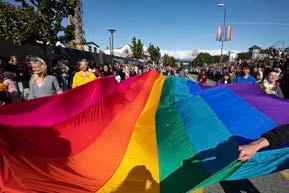
Dancer and choreographer Sigríður Soffía Níelsdóttir was diagnosed with breast cancer and underwent surgery, chemotherapy and radiation. To help make sense of a situation made all the more bewildering by the pandemic, she wrote poetry.
FROM PRIVATE WORDS TO THE NATIONAL THEATRE
“I wrote this book just for myself and I began with no intention of showing it to anyone,” Sigríður Soffía explains. “It was just my way of dealing with my situation. Then I made a dance piece where the words would be communicated in movement. But as soon as I sent the script, I got really good feedback from people saying that it should really be words along with the movement.”
Jónas Sen accompanying on piano.
“It’s really like a sketch show,” says Sigríður Soffía, who also performs in the production, sometimes dancing and sometimes providing comedic relief. “We’re moving through the book from beginning to end, but it speaks to the audience on an emotional level rather than telling a linear story.”
While Sigríður Soffía initially put pen to paper throughout her treatment to stay productive, publishing her poetry and staging her performance morphed somewhere along the way into sending a message to young people who will find themselves in her position that there will be progress with time.
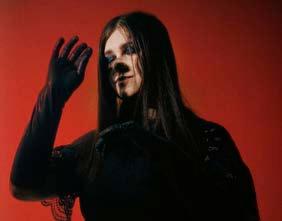
But I am still going up on stage. I really wanted to show a person my age that is doing something powerful and not giving up.”
MAKING ART ACCESSIBLE
From the start, Sigríður Soffía was interested in staging at least one performance of “Congratulations on Being Human” in English. That has been realised in the addition of English subtitles to the May 3 and May 19 performances.
“I think it’s so important with Iceland being a cultural society that artist take the time to be more inclusive,” she says. “We need to try to take the first steps now to make it a habit. Even if it’s just one show of many, I hope it will become more of a norm in theatres.”
May 18–21
What better way to celebrate the ascension of Jesus than with a fourday metal festival? From May 18 to May 21, Ascension Festival invites you into Gaukurinn for a jam-packed lineup of Icelandic and international artists. Leaning toward the heavier side of things, the festival will play host to artists ranging from hardcore and death-metal to goth and postpunk. Artists playing include Hekla, Kælan Mikla, Úlfúð, Une Misere and Múr – among many others. Be prepared to descend into the fiery depths of hell for the full festival price of 200 EUR.
Anot insignificant volume of art has emerged from the depths of the global pandemic. Musicians composed with the ample time afforded them, painters painted, photographers set their lenses on sparse cityscapes and nature in renewal.
That positive feedback resulted in the book of poetry being published by Forlagið and adapted as a stage production that premiered at the National Theatre on April 19.

“Til hamingju með að vera mannleg” or “Congratulations on Being Human” is, as Sigríður Soffía describes it, a show about how a person reacts when faced with uncertainty. “It’s about a person that feels like they’re losing all control and how they try to regain control through their actions and words.”
The performance features seven female actors and dancers of varying ages, staging Sigríður Soffía’s poetry as dance interpretations, acted scenes and music, with composer
“I feel like I’m making things that I would have loved to have when I got sick,” she says. “I would have loved to have a book of poetry written by somebody young that would say, ‘you’re in a shitty situation, but it’s gonna be fine because there’s a light at the end of the tunnel.’”
“It’s extremely humbling because I am not the performing artist I used to be,” Sigríður Soffía continues. “Being able to move without pain has taken me two years just to open up my joints. I’ve been a professional dancer, working on my physical shape, for 35 years and I still don’t have the physical ability to perform how I used to perform.
She recalls being an expat in France and seeking out ways to engage in cultural happenings, even if it was just finding the cinema that was screening films without French dubbing.
“It just feels so important that English speaking Icelanders have the opportunity to see these shows, even if they’re in Icelandic because theatre and dance are such a big part of our society, of the local culture.”.
“Congratulations on Being Human” will be performed with English subtitles at the National Theatre on May 19 at 20:00. Tickets are available on tix.is.
Ýrúrarí celebrates 10 years of turning sweaters into characters with a solo exhibition

Applied Art in Garðabær. She’s holding a giant pink nose in her hands, while other body parts are scattered around the room – mismatched eyes, purple teeth, a blue arm. Ýr and her trusty curators are getting ready for the artist’s solo exhibition, titled Nærvera, that runs April 28 to August 27.

“It would fit well on your shirt. Just needing a nose,” says textile designer Ýr Jóhannsdóttir – perhaps better known as Ýrúrarí – as we meet at the Museum of Design and
WEIRD AND WONDERFUL
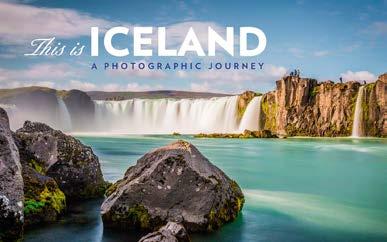
The exhibition features around 25 sweaters; the largest showcase

Ýrúrarí has ever done on her own.
“All the pieces in the exhibition are upcycled sweaters,” she explains.
“They are very similar to what I’ve been doing for the past 10 years.”
Ýr runs her fingers through a rack of colourful sweaters, explaining the story behind each garment. “Yeah, 10 years,” she sighs, as if surprised by her own words.
The theme of the exhibition explains its title – Nærvera, or Presence

“I have given a stronger presence to
all of the sweaters,” says Ýr. “They have turned into characters. Before I got them, they were kind of in the trash.”
Ýr used to work with the Red Cross in Iceland, upcycling sweaters that couldn’t be sold due to holes and stains. “Now my studio is in Berlin, so I’m working with the German version of the Red Cross,” Ýr shares, admitting that she brought some old sweaters with her when she moved to Berlin. “It’s a mix. But they’re all something that someone got rid of.”
When it comes to yarn, the artist also tends to use leftovers, but prefers Icelandic wool for needle felting. “Sometimes people just give me yarn. I can’t say no, so I use it,” she says while showing me a sweater. “I got this yarn from a girl in Berlin. She spins yarn out of dog hair, so it’s a mix of dog hair and sheep wool.” For the exhibition, Ýr is working with
06.05.–08.07.
Fimmtíu plöntur fyrir frið



Fifty Plants for Peace

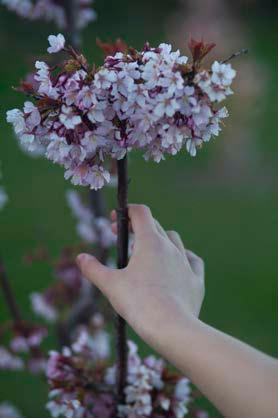
curators Niki Jiao and Yiwei Li from Studio Fræ. “They’re turning it into more of an experience than I had planned,” she says. “They have a more playful vision.”

SWEATER WEATHER STATE OF MIND
Ýr’s quirky designs have been showcased internationally and she had enjoyed her 15 minutes of fame during the pandemic with her reimagining of the suddenly ubiquitous facemask. With over 169k Instagram followers, Ýr says popularity can be intimidating. “It makes me post way less. But it’s fun to know that people appreciate what I’m doing.”
Living between two countries also has its ups and downs. “I do sometimes miss Iceland. It’s good and bad,” says Ýr. “It gets cold in the winter in Berlin, but in Iceland, it’s always cold. It’s always sweater season.”
“Last summer, I was in Berlin trying to knit a wool sweater and it didn’t make any sense. It was 40 degrees Celsius outside and I was inside with all this wool and I didn’t have any urge to work,” she shares.
“But in Iceland, you always feel like someone is wearing a sweater. It makes more sense.”
KNITWEAR THAT LASTS
Sustainability is the very fabric of Ýrúrarí’s art – for the past decade she has been working with the simple theme of making sweaters last longer by turning them into something special and personalised. “The inspiration is basically to turn them into characters,” Ýr explains. “If it has a familiar face, you can’t throw it in the trash – you don’t throw your friends in the trash.”
Ýr has been working on Nærvera for about a year – she has received listamannalaun, Iceland’s coveted artist grant, to create the exhibition.
“I’m hoping for it to travel a bit before I sell the sweaters,” Ýr says. After its run at the Museum of Design and Applied Art, the exhibition will jet off to Denmark. While her sweaters’ destination after Denmark is up in the air, Ýr’s future has some direction – she plans on writing a book to introduce people to the concept of upcycling.

“There are so many ways to upcycle. Mine is maybe not the most traditional way of doing it,” she admits.
“If this might inspire you to use upcycling for your own expression, it is going to be that kind of a book. But, of course, if you like minimalist, small mending techniques, maybe you should buy another book,” she smiles.
In addition, Ýr will be teaching a few open workshops at the museum where everyone is welcome to bring their own sweaters and fulfil their wildest textile dreams.
When we spoke, Ýr was also busy working with Studio Flétta on a collaboration project for the annual DesignMarch Festival, which runs May 3 to 7. “We bought a really big, almost industrial, felting machine. We’ve been upcycling wool leftovers from the Icelandic wool industry and we are felting wool pizzas,” she explains. “We will bring the machine to Gallery Port and we will have a
– you can see from the outside the station where someone’s putting the toppings on and where it’s coming up on the machine. It’s going to be a little pizza corner in Gallery Port.”
The idea was born when Ýr and Birta Rós Brynjólfsdóttir and Hrefna Sigurðardóttir from Studio Flétta were doing research at the Icelandic Textile Center’s TextileLab in Blönduós. “We always ended up making circles,” Ýr explains. “We were working 12-hour days or longer
characters.”
“I’m hoping to get more space to do different things,” she says. “I’m hoping to create more things from scratch, trying to do it the right way, because being sustainable is important to me.” She’s planning to move back to Iceland in the summer to work on her book and continue experimenting with the felting loom and a digital knitting machine.
menu – people can come and order pizzas from the menu.” The upcycled pizzas will be sold for the price of a pizza, you can hang them on a wall, use them as a rug, or a trivet. “We’re now prepping all the bases. The only thing left is putting the toppings on. Then we just put it through the machine 5–6 times, and you get a nice box with a pizza.”
Ýr agrees she and her collaborators at Flétta are keen on showing off their investment, but the project is
and I think we were just tired and we were joking ‘Oh, it’s almost like making pizza.’ Then we just decided to play and make one pizza.”
QUIRKY
Though admittedly busy making sweaters, running workshops and crafting pizzas, Ýr says she’s ready for more: “The first sweater I made, I feel like I’m still making the same sweater. It’s very similar to this one, with the eyes on the elbows,” she says, showing off one of her
In the meantime, with Nærvera, Ýr and her curators have prepared a funhouse experience – a journey through a colourful maze full of cartoonish textile creations, with each turn revealing a new surprise, including a chance to imagine your own sweater with a nose.
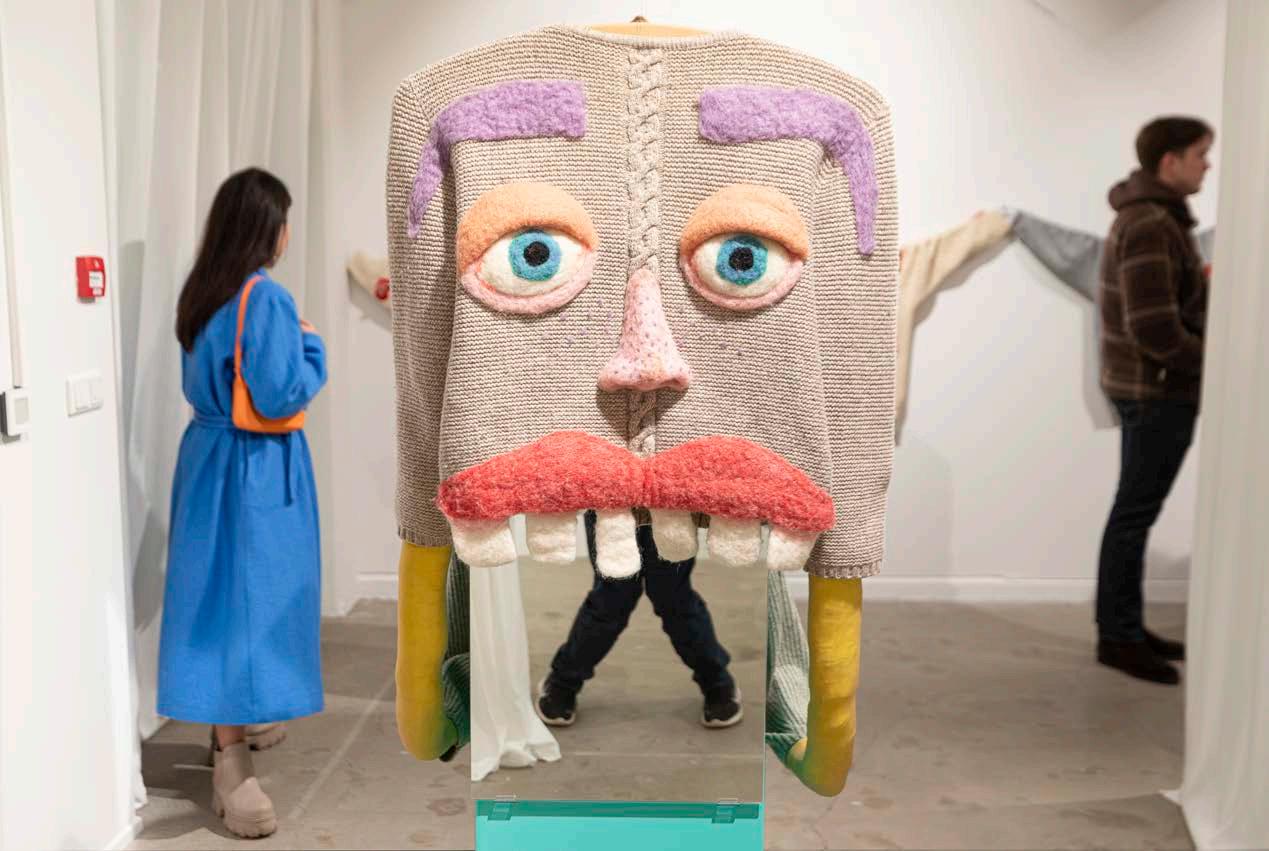
“The main inspiration is to break up how everything is kind of dull sometimes in the everyday,” Ýr concludes. “If everyone was wearing a sweater like this, it would brighten things up.”.
Nærvera runs until August 27. Check the museum website for info on guided tours and open workshops: honnunarsafn.is
IMAGES
Supplied by Anna Karínfilm XY won Stockfish back in 2019.
“After graduation, I started working at RÚV, the national television station, mostly in KrakkaRÚV and UngRÚV [programming for kids and teenagers],” Anna explains. “I was mostly editing and shooting segments, but also directing.”
Winning a short film competition is a big deal for an aspiring filmmaker. Doing it twice is a dream that not many will see come true. But director Anna Karín Lárusdóttir has already achieved this feat – in 2019 with “XY” and just a few weeks ago with Felt Cute, both wins at Stockfish, Iceland’s film and industry festival. We caught up with Anna Karín virtually to talk about her most recent festival win, struggles of making a career in film and her future plans.
“I don't know if I should just start from the beginning of my career,” Anna Karín smiles when I admit I couldn’t find much information about her online. “I was lost about what I wanted to do after high school. My mom, who is a guidance counsellor, said that I could be a good director,” she laughs. “I didn't even know that you could make films.”
Anna Karín didn’t have cinematic role models growing up despite being obsessed with films. It wasn’t until she looked into what a filmmaker does and applied for the Icelandic Film School that she started learning about the ins and outs of the craft.
“I went [to school] and fell in love with directing,” she shares.
Since Anna Karín had long wanted to continue her studies at the National Film School of Denmark and her latest project, Felt Cute was headed to Denmark for post -production, she made the move to Copenhagen. “I didn't get in, so now I'm just going to be here over the summer and I’ll move back to Iceland in August,” she shares.
Although the film spans just 15 minutes, creating Felt Cute was no small feat. Anna Karín spent almost a year working on the film. The story follows an 11-year-old Breki who makes a mess at his sister’s room while trying on her makeup.


“I have been very interested in the way we put people into these gender boxes. If you act in a certain way, people think you're gay, trans or whatever,” Anna Karín says.
“This film is not a coming out film. It's never stated if the character is queer in any way. But it doesn't mean that he isn't,” she explains.
The film is partially inspired by Anna Karín’s relationship with her younger brother. “The story is not about him, but the dynamic is similar to our dynamic when we were young,” she says. “I was just really fascinated about young boys being interested in feminine things,” Anna Karín continues, adding that she’s noticed that many boys are discouraged from pursuing such interests due to societal pressure.
Having spoken to multiple local film directors, I know that there are two difficulties when it comes to casting in Iceland – animals and kids. Anna Karín auditioned 150 children before finding the right actor for the lead role. “I met a lot of boys that were amazing, but I just didn't feel they were him. It didn't fit,” she says. “As soon as I met him [Kormákur Cortes], I had this gut feeling of ‘yes.’”
Once Anna Karín found the right boy for the role of Breki, she cast the character’s sister. “It's insane how many talented young girls there are,” Anna Karín admits.
Despite working with kids and teenagers in the past, Anna Karín confesses it has been a challenging process. “It's a big responsibility,” she says. “Sometimes I felt like I was failing them. It really got into my feelings.”
“It was a very stressful shooting compared to what I'm used to,” Anna Karín recounts. “All the films I've made have been school projects, but this was the first one that had a production company, real lights and stuff. It definitely took longer than I expected to set everything up,” she says.
SHORT FILM, LONG-TERM DREAMS
“I think it's kind of insane how good these prizes are,” Anna Karín says when asked how it feels to win Stockfish. “One thing is to win an award at a festival and you can put it on your CV, or it can make the ball start rolling. But this actually makes things happen.”
“It's completely different from when I won in 2019, and that's not many years ago. It's definitely grown. There’s way more films, many more prizes and bigger prizes,” Anna Karín is happy to see the festival
attend in person this year. As the winner of the Narrative category, Felt Cute gets 1.000.000 ISK of in house rental from KUKL Rental, a 700.000 ISK cash prize from RÚV, and 200.000 ISK of in house service from Trickshot.
“I want to start planning a feature film, which I will not shoot in the near future, but maybe I will use it for making a proof of concept film, research or something,” Anna Karín says of her plans for the prize money.
The bad news is that if you missed Felt Cute at Stockfish this year, chances are you won't be able to watch it online anytime soon.
Anna Karín explains, “If you have it accessible online, you can't show that at film festivals.”
A TOUCH OF HONESTY
“In general, people who are not in filmmaking are not very interested in short films,” Anna Karín admits.
fine, but it's maybe not something that I would be interested in doing forever.”
While Anna Karín’s dreams to continue studies in Denmark didn’t pan out, she has taken a step back from filmmaking – at least for now. “I work at a bar in Denmark. I haven't really been doing anything film related since I finished this film,” she says. “I just wanted a simple job where I could meet people and learn Danish.”
“I think it is, at its core, curiosity about people,” Anna Karín says of sources of her inspiration. “Making films is a way for me to learn about other people. We're all so different, we have different opinions, values and culture.”
The name Felt Cute refers to a popular internet meme, but it’s also just a reminder that situations like the one described in the film don’t have to be a big drama, they can
“Maybe just because short films are not something that is a part of our culture?” she shrugs. “You don't go on YouTube and watch short films. When you're making short films, you're always kind of making them for other filmmakers in a way.”
Anna Karín sees short films as a way to refine her abilities for making future feature films. “That's where you get a real audience,” she says.
“Nobody wants to pay you for directing shit,” Anna Karín says about working as a filmmaker. “You just have to apply for grants. If you want to actually work and get paid, you'd have to put a lot of work into other people's projects, which is
be as mundane as anything else. “I don't want to sound so cliché, but I wanted people to feel hope,” Anna Karín says. “In the past, films about people that are different in any way, especially queer and disabled people, have been very traumatic and gruesome.” While she acknowledges such stories are important to tell, there should be space for more. “They deserve to have these normal, cute stories about where they are safe and where they can just be themselves. I want to do that.”.
The Stockfish Film Festival took place on March 23 to April 2, 2023. Follow stockfishfestival.is for info about next year’s festival as it’s released.
This film is not a coming out film.
Krónan offers a great selection of top-quality, fresh products, including a wide selection of vegetarian and vegan options.
Stop by our stores for low priced groceries! You’ll find them in various locations in Reykjavík and the capital area, and also on your journey around Iceland.
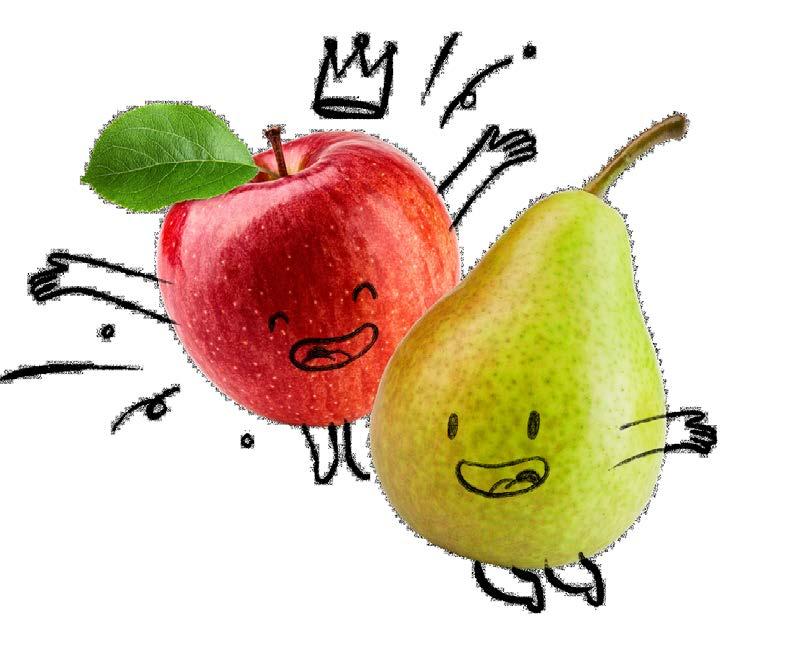
We're here to fill you in on our personal favourite places around town – and a few to consider avoiding.
1 NAPOLI Tryggvagata 24
We love places that do one thing and do them damn well. This takeaway place is a case in point. Napoli offers sourdough Neapolitan-style pizzas with a menu to match – think margherita, quattro formaggi, parma, calzone – plus vegan options and magnificent sandwiches. Look out for their lunch offer, every day from 11:30 to 15:00. JT
2 G AETA GELATO Aðalstræti 6 & Hlemmur Mathöll
Gaeta Gelato is at the centre of a heated ongoing debate at the Grapevine office about who makes the best ice cream in the country. For those keen on the deep tastiness of Italian gelato, this place is IT. They are also located right smack downtown, so you can take that icecream for a stroll – we suggest a stroll to their other location for another scoop. JT
3 PLANTAN Njálsgata 64
This cute little neighborhood cafe is 100% vegan and does a few things right: their soup of the day menu updates every week and uses seasonal produce, they mastered the plantbased cheese bun recipe to perfection, and this might be the most hearty vegan brunches in town. Look out for the daily bun and coffee deal, it truly is like a warm hug. IZ
4 BR AUÐ & CO. Frakkastígur 16 (and other locations)
If you’re dying to have some of the finest pastry, look no further than Brauð & Co. Although the bakery has several locations around town, our hearts are devoted to the Frakkastígur one. You have to try their pretzel croissants, vegan cinnamon rolls, and weekend specials. There’s nothing quite like sitting on a bench at the intersection of Njálsgata, Frakkastígur, and Kárastígur, sipping coffee and enjoying the sun. A true weekend essential! (Beware of windy weather, as some of our team members may or may not have had their pastry stolen by the wind at that exact spot.) IZ
5 CAFÉ BABALÚ
Skólavörðustígur 22
This quirky café hangout is a great choice when you’re looking for a cozy, chill experience. Decked with kitschy decor and plush chairs, the café is perfect for a refuge from an instant shower of rain. If you’re looking to snuggle up with a book and a good cup of coffee, look no further. JB
6 BAN THAI Laugavegur 130
The absolute GOAT – as they say – in Thai cuisine in Reykjavík. Ban Thai’s menu is dotted with little symbols of chili, denoting the spice level of each course. You’re welcome to order a level-5 chili course, but do so at your own risk. JB
7 GR ÁI KÖTTURINN Hverfisgata 16a
This no-nonsense downtown staple has been serving Reykjavík dwellers quality breakfast food since 1997. Tucked away in a cute cellar, the diner boasts retro Icelandic design charm, while its menu is far from outdated. Pancakes, bagels, and frying oil all have their special place at Grái Kötturinn. As Grái Kötturinn closes at 14:30 every day, it’s not a place for nighthawks, but early-birds. JB
8 CHICKPEA Hallveigarstígur 1
This Mediterranean-inspired restaurant is a great place for a quick bite. Servings are generous and the food nutritious, meaning you’ll go full well into the day. They do wraps, falafels, and all kinds of salads exceptionally well. Prices aren’t extremely steep, but nothing to write home about either. JB
9 KRÓNAN Hallveigarstígur 1 & more locations
If you’re ever in a pinch while looking for something cheap to eat if you’re downtown just go to Krónan and pick out some flatkökur. Flatkökur goes great with everything. Be it the Mediterranean/Icelandic fusion of lathering some with hummus, or turn it into a poor-man’s pizza with pizza sauce and cheese. Honestly, the flatkaka is an empty canvas for you to paint your wildest dreams on. JB
10 APERÓ VÍNBAR
Laugavegur 20b
A wine bar that is both opulent and accessible? Yes please. The small team at Aperó remember the orders of regulars and make first-timers feel like regulars. If you know what you like, Aperó will tick your boxes; and if you’re new to wine, the sommelier will soon unite you with your ideal glass. CF
11 KEX HO STEL Skúlagata 28
The former biscuit factory now serves as a trendy hostel, with a bar, restaurant, and a live concert space. There’s always something going on, and if not, it’s a great spot to grab those after-work drinks. With a rotation of foreign tourists who stumble onto a heavy metal show happening in the restaurant, you’re always bound for an enjoyable experience. JB
12 KAFFIBARINN Bergstaðastræti 1
No words are needed for Kaffibarinn. The hangout spot for the who’s who of Reykjavík. Frequented by Blur members in the 90s, drug dealers, and middle-managers, Kaffibarinn is an establishment in itself. JB
13 VITABAR Bergþórugata 21, Iceland
If you’re staying in Reykjavík more than a few days, you ought to find your own dive bar – this is ours. It seems like the time froze at Vitabar, but we love it that way. People come for their famous blue cheese burger, but stay for a few pints and delicious fries. Sometimes I wish Vitabar discovered craft beer, but I go back nevertheless – for a late night bite and Thule on draft. IZ
14 VÍNSTÚKAN TÍU SOPAR Laugavegur 27
There are a few bars in Reykjavík that have learned how to do wine right, and Vínstúkan Tíu sopar, although located in the middle of the chaos and tourist buzz of Laugavegur, is one of them. Craving Pét-nat? In the mood for orange wine? Ready to explore small Slovenian wineries? You name it – the bar’s staff will be ready to come up with suggestions that will suit any pocket. Don’t get me started on their small bites to pair with wine – I’m already dreaming about their grilled peppers and torched broccoli with salted lemon. IZ
15 BÍÓ PARADÍS Hverfisgata 54
Sometimes the smell of popcorn fills the air of Hverfisgata, as if beckoning you to come inside. You succumb and find yourself in the cutest art house cinema with colourful posters on the walls and vintage-looking bar straight outta Wes Anderson movie. There’s always a film screening and you rarely need to book tickets in advance, so enjoy the old school walk-in experience and one of the best Happy Hours in town. IZ
16 EINARSGARÐUR
Laufásvegur 79
This little green space nestled into the curving juncture of Laufásvegur and Gamla Hringbraut is an oasis in the city. Exposed to full sun seemingly all the time, it’s a peaceful spot to stroll through, climb trees, luxuriate on the grass or toss the ball for your four-legged friend. Don’t do that last thing, though. It’s not allowed. CF
17 101 BISTRO Austurstræti 3
The bistro on the corner of Ingólfstorg and Austurstræti that has a plaque outside saying, “Come in and try the worst [insert popular food item] that one guy on Tripadvisor said we had”, or something like that. It’s a trap, do not go there. That plaque has been in the same spot ever since Hrunið. RG
18 SBARRO
Austurstræti 17 & Vatnsmýrarvegur 10
“What is this shit?” is how Greil
Marcus famously opened his review of Bob Dylan’s 1970 album in Rolling Stone. It is appropriate here. It looks like pizza, it is sold as pizza, it’s priced like foie gras, but it tastes like salted shit. Avoid. RG
19 REYKJAVÍK FISH RESTAURANT
Tryggvagata 8
Our beef with this place has to do with their “plokkari” (Traditional Icelandic Fish Stew). The fish stew is what you make out of fish leftovers and potatoes, adding bechamel sauce, topped with cheese and then baked. It’s generally a good dish, a great way to avoid wasting food and it costs next to nothing to make. Taste wise, there is nothing wrong with how Reykjavík Fish makes their “plokkari”, the problem is that the volume you get for the price is unacceptable; a tiny cast iron pan of fish stew for 2.690 ISK. An outrage. RG
20 LEBOWSKI BAR Laugavegur 20a
A joke that’s gone too far. The longest lasting theme bar that sprung up during a theme-bar craze many years ago. It is the only place in Reykjavík where I’ve witnessed a grizzly physical assault, pickpocketing and generally bad vibes. The Dude does not abide. RG



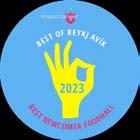
Tryggvagata 11
After much anticipation, the restaurant venture of mononymous entrepreneur/philanthropist/Twitter icon Halli (aka Haraldur Þorleifsson) has finally opened! Anna Jóna’s simple yet elegant menu of mouth-watering classics done right, featuring high quality ingredients without being fussy. The gorgeous, retro-chic interior is an experience in and of itself – every detail of the décor is just right. The classic horseshoe bar is especially notable for its height being the same as the tables in the space, making it accessible for all. Anna Jóna will soon see the addition of a small cinema, showing classics, cult films and more. Treat yourself to this lush experience and keep your eyes open for their events!

Opening hours
Every day 8:00–23:00

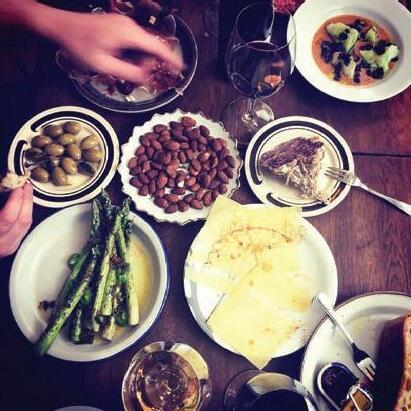


Gallery openings, happenings, showings and pop-up exhibitions all around the capital region
KEX HO STEL
Guðrún Sverrisdóttir: The Dream
Guðrún Sverrisdóttir made a promise to herself to pursue her love for art in her second chapter of life. This is an exhibition of paintings inspired by nature, people, experiences and life as she sees it.
Single event on May 6, 14:00–16:00
PORTFOLIO GALLERY
Fritz Hendrik–Drit / Droppings
Fritz Hendrik IV (b. 1993) is an Icelandic artist interested in the act of both the conscious and unconscious staging in life, art and culture. Fritz tackles the relationship between tradition, perception and knowledge in his works.
Opens May 6
Runs until May 28
THE TECHNICAL COLLEGE
Graduation Exhibition
An exhibition of the graduation projects of the school’s class of 2023, featuring book binding, graphic design and photography.
Opens May 12
Runs until May 15
GALLERY GRÁSTEINN
R. Benedikta – Undan Jökli
Illustrations and paintings
Runs until June 2
G ALLERÍ GRÓTTA
Jón Thor Gíslason: Heimar
Paintings
Runs until May 13
G ALLERÍ LISTVAL
Guðrún Einarsdóttir – Málverk
Oil paintings
Runs until May 20
G ALLERY PORT
Þrándur Þórarinsson – Borgarlistamaður
Paintings
Runs until May 1 1
GALLERÍ SKILTI
Helgi Hjaltalín Eyjólfsson – Þið öll
Photographic representations
Runs until June 15
G ALLERÍ UNDIRGÖNG
Helgi Hjaltalín & Pétur Örn:
Markmið XVI
Photography
Runs until June 15
From One Place To Another:
Ada Stańczak, Designer in Residency Ceramics
Runs until May 14
Presence – New sweaters by textile designer Ýrúrarí
Textile works, installation Runs until August 27
Habitations
An exhibition of miniature apartments created by 4th graders from Garðabær Runs until September 10th
At Home in the Design Museum
Over 200 examples of Icelandic design from 1900 to the present Runs until March 2026
NATIONAL GALLERY OF ICELAND
The Private Collection
An exhibition of various items, such as worn underpants, that were bequeathed in 19th century wills Runs until May 7
Forty Years of The Corridor Fortieth anniversary exhibition of The Corridor exhibition space Runs until June 4
Rúrí: Glassrain
BERG CONTEMPORARY
Katrín Elvarsdóttir
– Fifty Plants for Peace
Photography exhibition centering the cherry blossom trees gifted to the city of Reykjavík in the final days of May 2011 by the Iceland-Japan Society, planted in Hljómskálagarður Park.
Opens May 6
Runs until July 8
GR AFÍKSALURINN
Ragna Ingimundardóttir – 103 Vases
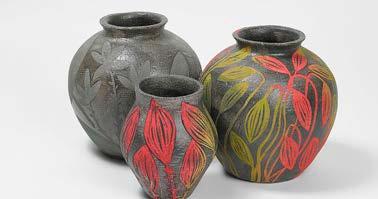
Ragna Ingimundardóttir displays a total number of 103 vases under the sound installation of Ingimundur Óskar Jónsson.
Opens May 13
Runs until May 28
REYKJAVÍK ART MUSEUM – HAFNARHÚS
DYNAMO: Graduation Exhibition Exhibition of works by 74 students graduating from the Iceland University of the Arts, encompassing visual arts, graphic design, architecture, product design, and clothing design.
Opens May 18
Runs until May 29
Y G ALLERY OPNUN
Group exhibition of mixed design and artworks, curated by sibling artists Ragga and Magga Weisshappel.
Single event on May 6, 14:00–18:00
Harpa
How does a person accustomed to working in sound approach visual arts? Musician Baldvin Hlynsson employed an oscilloscope to convert sound waves into graphical representations, applying the practice to 12 note intervals to create colourful representations of the interactions of notes and sounds. He also personalised each with colour combinations that express his feelings about each particular interval. Can you guess which is his favourite? Go check out the exhibition and let us know your thoughts.
May 13–28
Grafíksalurinn
If you’ve been to the exhibition space at Íslensk Grafík before, you’re likely eager to attend Ragna Ingimundardóttir’s exhibition just to see how 103 vases can be displayed while still leaving room for visitors to mill about. Even if not driven by that curiosity, it’ll be worth a visit to marvel at the earthy and intricate creations while taking in the sound installation of Ingimundur Óskar Jónsson, which incorporates recordings of the vases being made.
Pop around for the opening May 13 at 14:00
ÁSMUNDARSAFN
Ásmundur Sveinsson and Sigga
Björg: Breath on a Window Sculpture and multimedia.

Runs until May 7
EINAR J ÓNSSON MUSEUM
Einar Jónsson – Sculpture Works & Garden
Permanent exhibition
FLÆÐI Sóley Lee Tómasdóttir: MJÚKIR KALLAR Textile, multimedia design works Runs until May 7
GERÐARSAFN (KÓPAVOGUR ART MUSEUM)
Tracing Fragments
Group exhibition, mixed media
Runs until May 21
GLERHÚSIÐ
Einar Garibaldi Eiríksson:
Reykjavík / A Guide
Installation
Runs until June 1 1
HAFNARBORG CENTER OF CULTURE AND FINE ART
Uncanny Virtuality
Digital art, mixed media Runs until May 29
Jóhann Vilhjálmsson:
Written Images
Drawings Runs until May 29
HARPA
Circuleight
Mixed media installation Runs until May 31
Baldvin Hlynsson – Intervals
Graphic art Runs until May 1 1
i 8 GALLERY
Lawrence Weiner & Birgir
Andrésson: Part I
Installation Runs until September 17
NORDIC HOUSE
HOW DID I GET TO THE BOMBSHELTER
Multidisciplinary group exhibition Runs until May 14
REYKJAVÍK ART MUSEUM – HAFNARHÚS
D-47 Logi Leó Gunnarsson
Mixed media, installation Runs until May 7 Kaleidoscope – International Collection
Multidisciplinary, select works from permanent collection Runs until May 7
Erró: Cunning Scissors
Works spanning the entirety of Erró’s vibrant art career Runs until December 31
REYKJAVÍK ART MUSEUM – KJARVALSSTAÐIR
Kaleidoscope: Icelandic 20th Century Art Paintings, sketches, drafts, and more Runs until August 7
REYKJAVÍK CITY LIBRARY – GRÓFIN
DYNAMO: Graduation Exhibition

May 18–23
Reykjavík Art Museum – Hafnarhús
The freshest, most diverse exhibition of the year takes place at Hafnarhús later this month, then 74 graduates of the Icelandic Academy of the Arts put their final projects on display. The wildly popular annual exhibition showcases the works of students in art, graphic design, architecture, fashion design and product design. It's an eclectic museum-going experience and a chance to see the works of the new generation of Icelandic artists and designers.
Installation, sculpture, painting, and work on paper Runs until May 13
i 8 GR ANDI
B. Ingrid Olson – Cast of Mind
Installation, mixed media Runs until December 20
MO SFELLSBÆR ART GALLERY
Geirþrúður Einarsdóttir and Berglind
Erna Tryggvadóttir – Litlar Lindir
Mixed media Runs until May 19
Stofan | A Public Shower – Part One Multisensory installation Runs until May 9
REYKJAVÍK MUSEUM OF PHOTOGRAPHY Press Photographs of the Year 2022 An annual exhibition held by the Icelandic Press Photography Association Runs until May 28
SIGURJÓN ÓLAFSSON MUSEUM
The Gift of Children
Paintings
Runs until Autumn 2023 From Various Sources
Sculpture Runs until Autumn 2023
CONTEMPORARY ART IN THE CITY.
ON THE LAST THURSDAY OF THE MONTH A NUMBER OF MUSEUMS AND EXHIBITION SPACES OFFER EXTENDED OPENING HOURS AND SPECIAL EVENTS.
If you’re putting something on for the general public, send us a line to events@grapevine.is. See more at events.grapevine.is.
Sunday May 7 Singer / Songwriter Night
20:00 Gaukurinn
DJ Lamp Vader
20:00 Kaffibarinn
Monday May 8
Open Decks w/ Día
20:00 Bravó
Saturday May 13
Nýdönsk
20:00 Bæjarbíó
Eurovision Grand Final Screening
19:00 Bíó Paradís
Eurovision Viewing Party
19:00 Gaukurinn
Visions x Transition Psytrance Iceland: Atom, Bjorn Alpha, Pcyber
22:30 Húrra
Friday May 5
Friday Night Party Screening:
The Room
21:00 Bíó Paradís
O.S.T.R. & DJ Haem
20:00 Gamla Bíó
Hljómburð Fundraising Show:
Leiburðar
20:00 Gaukurinn
Singing Spring: Icelandic
Women’s Choirs
18:00 Harpa E ldborg
Reyk ON vol.1
20:00 Húrra
ArtBeat Festival
22:00 IÐNÓ
DauÐnafn, Sucks To Be You Nigel & Dauðyflin
19:00 Völvufell 17
GusGus 19:00 Independence Hall (Iceland Parliament Hotel)
Halldór Eldjárn
20:00 Mengi
Flying Elbows
21:00 Bryggjan Brugghús
DJ Óli Dóri
20:00 Kex Hostel
PLEASURE Vol. III: Daisy Cutter (PL)
× SLEY (IS)
23:00 Bravó
Saturday May 6
RVK Death Fest: Úlfúð, Örmagna & More
20:00 Gaukurinn
The Reykjavík Big Band: Pop Music
20:00 Harpa E ldborg
Cello, Rímur, & Electronic Music
16:00 Harpa Kaldalón
AC/DC Tribute Show
20:00 Húrra
From Poland With Love: RYSYlive
22:30 Húrra
GusGus 19:00 Independence Hall (Center Hotel)
Steinalda by Guðmundur Steinn
Gunnarsson
20:00 Mengi
DJ Óli Dóri
20:00 Kaffibarinn
Irina Shtreis & MC Myasnoi
20:00 Kex Hostel
KR Bear
Tuesday May 9
Eurovision Semi-Final Screening
19:00 Bíó Paradís
Karaoke Night
20:00 Gaukurinn
DJ André
20:00 Kaffibarinn
Wednesday May 10 Mosi frændi, Tuð & Hemúllinn
20:00 Gaukurinn
Marilyn Monroe Tribute Concert
20:00 Múlinn Jazzclub

DJ Ómar E
20:00 Kaffibarinn
Leon S. Kemp
20:00 Bravó
Thursday May 11
Eurovision Semi-Final Screening
19:00 Bíó Paradís
Eurovision Semi-Final Screening
19:00 Gaukurinn
Kári Album Release Show
20:00 Independence Hall (Iceland Parliament Hotel)
Jónbjörn (Lagaffe Tales)
20:00 Kaffibarinn
Quiz Night with Davíð Roach
20:00 Kex Hostel
Eva Luna
20:00 Bravó
Friday May 12
Apocalypstick Drag Show
20:00 Gaukurinn
Eurovision Concert
20:00 Háskólabíó
Angle of Thaw: Kristina Warren & Jesper Pedersen
20:00 Mengi
Nýdönsk
20:00 Bæjarbíó
Mojo (DJ Kári & KES )
20:00 Kaffibarinn
Marit Soldal (NOR)
22:00 Bravó
DJ KGB
20:00 Kex Hostel
DJ Kjörk
20:00 Kaffibarinn
Eurovision Live
19:00 Kex Hostel
DJ KGB
22:00 Bravó
Sunday May 14
Sunday Classics: England x3
16:00 Harpa Norðurljós
Jón Halldór
20:00 Kaffibarinn
Sunday Club
20:00 Bravó
Monday May 15
Bring The Laughs: Comedy Night
20:00 Gaukurinn
DJ Hendrik
20:00 Kaffibarinn
Minimal Monday w/ Tadas Ersha
20:00 Bravó
Tuesday May 16
Karaoke Night
20:00 Gaukurinn
Kraftgalli DJ set
20:00 Kaffibarinn
Wednesday May 17
Twitchy Love: Comedy/Drag Night
20:00 Gaukurinn
Úlfur Eldjárn
20:00 Hannesarholt
Pthumulhu, Hekla, Náriðill
18:30 R6013
DJ Silja Glömmi
20:00 Kaffibarinn
We Are Eternal
20:00 Bravó
KUSK, Óviti and more Live
20:00 Kex Hostel
Thursday May 18
Tilbury Album Release Show
20:00 Gamla Bíó
Ascension MMXXIII
20:00 Gaukurinn
Mukka Album Release Show 20:00 Mengi
DJ Vérlarnar 20:00 Kaffibarinn
DJ Moonshine 20:00 Kex Hostel
Eternal Roots 20:00 Bravó
22:00 Bravó
3.2.2023—
Kári: Palm Trees In The Snow Album Release Show

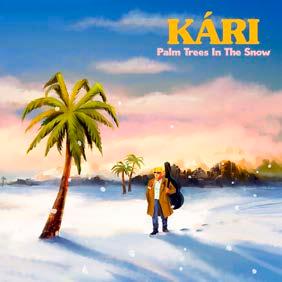
May 11 20:00
Independence Hall (Iceland Parliament Hotel)
Thrashing into the music scene with whirlwind-like determination, Kári brings a much sought after jazzy elegance to Iceland’s pop-music landscape. Only 22 years old, Kári released his debut album last March, stock-full of melodic pop-songs that incorporate elements of jazz and bossa nova. Let the sounds carry you away to a tropical island on May 11 in the space formerly known as Nasa.
Tilbury Album Release Show
May 18 20:00
Gamla Bíó
Founded by frontman/singer/songwriter Þormóður Dagsson in 2010, Tilbury’s beautiful indie-esque pop made a huge splash the same year with their massive hit “Tenderloin.”
Now, a decade after their last album release, Tilbury is back with So Overwhelming. Possibly referring to the effort it takes to write, record and publish an album in Iceland, Tilbury delivers a similar strain of feel-good indie-pop. Join them in celebrating their newest release on May 18 at Gamla Bíó.
Nýdönsk
May 12 and 13 20:00
Bæjarbíó
Apart from their name, Nýdönsk (New Danish) is the most Icelandic band ever, having enjoyed immense popularity locally since their first single hit the airwaves back in 1987. If you are OK with lyrics exclusively in Icelandic, Nýdönsk’s music – much like their pastry semi-namesake – is “multilayered, laminated [and] sweet,” and the contrast in style between the band’s two main vocalists, Daníel Ágúst and Björn Jörundur, make those lyrics you can’t understand, at least interesting to listen to.
Underground punk-rockers Sucks
To Be You Nigel have finished recording their sophomore album. Rumour has it that the young punks have teamed up with local musician, concert promoter, and producer Ægir Sindri Bjarnason – the man behind the renowned underground
venue R6013. STBY-N released their debut album in 2021 via Spectral Assault Records, which was awarded the annual Kraumur Awards for album of the year. The album release date – and its title – are yet to be confirmed. JB

Following her coronation as Iceland’s entry into the 2023 Eurovision Song Contest, Diljá Pétursdóttir has travelled to Liverpool to make her country proud. Diljá will perform on the second semi-final
the favourable crystal-ball ends there. According to top Eurovision specialists – a job title we wish we had – the Icelandic act is predicted to end up near the 30th place. Read the Grapevine’s
In April, Iceland Music, the export office for Icelandic music, reported a novel increase in the number of export funding applications they received. The office offers both travel and marketing grants for Icelandic musicians, with the aim of helping Icelandic artists make waves internationally. Since last year, both grants have received an increased

number of applications by 28% and 44%, respectively. The total amount artists requested in 2022 was approximately 145 million ISK, but only 49.4 million ISK was granted.
Iceland Music has been granted an extra 4 million ISK this calendar year to meet up with the demand, which doesn’t show any signs of slowing down. JB
It’s a hectic morning for Jófríður Ákadóttir, known as JFDR , when I arrive at her bright and charming apartment on the west side of Reykjavík. Having just returned from a series of soft-launch performances ahead of the release of her third solo studio album, Museum (released April 28th), the enigmatic musician is getting ready to go right back out on tour shortly after we talk. She floats around her flat doing this and that with a softness that seems contrary to how busy she is describing her life to be right now. Whatever the opposite of a bull in a china shop is, such is Jófríður.
We sit down at her dining room table and she proudly reveals the just arrived vinyl copy of the album, the cover of which is a stark, stunning black and white portrait of her positioned as a statue – standing on a pedestal, stoic, draped in a white gaussian shroud, staring back at the viewer both as subject and
object. “I don't feel like I've been put on a pedestal,” she says about the symbolism, regarding the fact that she’s been a prominently successful musician since her teens. “I think what I do is kind of niche enough that it’s maybe celebrated, but there isn't really a space for being like some celebrity singer-songwriter type person. That's not really what it's about.”
The symbolism of the statue on the cover seems to rather speak to her songwriting process in the creation of Museum. “It’s like when you're sculpting something, like a feeling or you're presenting an idea, but you could also say you're presenting a thought or a story,” she describes the form of preservation of fleeting moments that this album became. “It just felt like a very kind of easy sort of visual connection to that. I work a lot more with the moment. I would just sit down and I would just start writing on a piece of paper and then those would often end up being the words
onset of the pandemic coincided with the release of her second solo album New Dreams, prompting her to cancel planned tours.
“The album to me as much as it's about sculpting, it's also about healing,” she says about the process, a catharsis in its truest sense. “It's about healing yourself as an artist and clearing the paths for creating something new. I've been on such a continuous path since I was 14, and COVID kind of halted that. Not just for me, for everybody. But then dealing with that, you have the time to reflect and think like, ‘Am I on the right path?’”
Jófríður spent most of the initial COVID-19 pandemic living in Brisbane, Australia, the hometown of her husband and musical partner Josh Wilkinson. Experiencing the same collective isolation, shock and grief as the rest of the world, she spent the time much like a lot of people did: glued to the couch,
I would use. And those would be the moments where I was processing and you know, sculpting.”
The sculptural songs on the album are works she composed after a long period of creative stasis resulting from the grip of the first wave of the COVID-19 pandemic. The

crocheting, watching TV, freaked out. It took nearly two years for the urge, possibly even the ability, to write music to come back to her. Once back in Iceland in 2021, she took to her small home studio where she began tinkering and laying down melodies in Ableton, using piano, guitar and her favourite plugins.
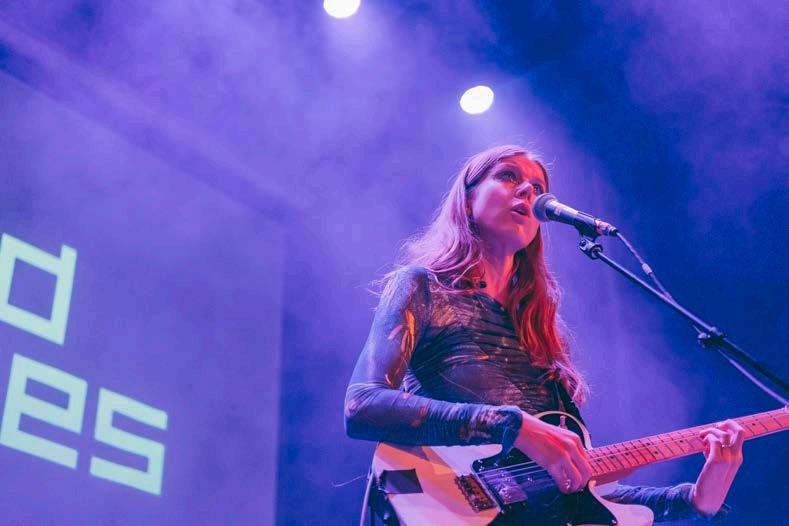
Every time you start a new thing, it's kind of impossible to go back or to recreate something that you've done once.
Naturally, however, returning to the practice of composition presented its own challenges. "Every time you start a new thing, it's kind of impossible to go back or to recreate something that you've done once, just because of your situation or the people you have around you,” she says. “So for this, I was a bit lost. I was like, ‘I don't really know what my process is, I don't really know what people I have at the moment, and I don't really know who I want to do this with.’ So those were the challenges. It was quite heavy at the start.”
Her writing process then veered toward instinct and simplicity. Playing her primary instruments of guitar and piano in a similar finger picking style, she filled the songs with lush, intricate arpeggiated motifs that became almost percussive on their own terms. The final album notably features almost no unpitched percussion instruments. She let her tools guide the way.
a canvas,” she once again alludes to visual arts in her process. “I didn't even think about it until afterwards. It's like painting these different sorts of similar patterns.”
Eventually her sculpture began to take shape. “It was late 2021 when I started working on this record, fully. I came to Josh and I was like, ‘I have nine songs. I think they could be an album. Should we just do it?’ I was just really impatient.”
With this sense of immediacy, in early 2022 she booked a week at Figure 8 studios in New York, run by her long-time collaborator Shahzad Ismaily, where they got started on tracking. They quickly gained such momentum that she decided to book another five days to mix it all, and by the end of February 2022, she hit her deadline and the album was complete.
this. I was trying to create that urgency. I think when you're young and you're just starting out, and maybe making your first record or your first song, you have this sense of urgency, because it's like, ‘This is my moment, this is my manifesto, this is who I am.’ And to have such a strict deadline was a way to recreate that urgency again.”
“There are a lot of songs in 120 bpm because that's literally how I opened the session in Ableton and it’s like

“We were working really hard,” she says, “There was like a period in January and February where we were going crazy. Every moment that we had just went into trying to finish
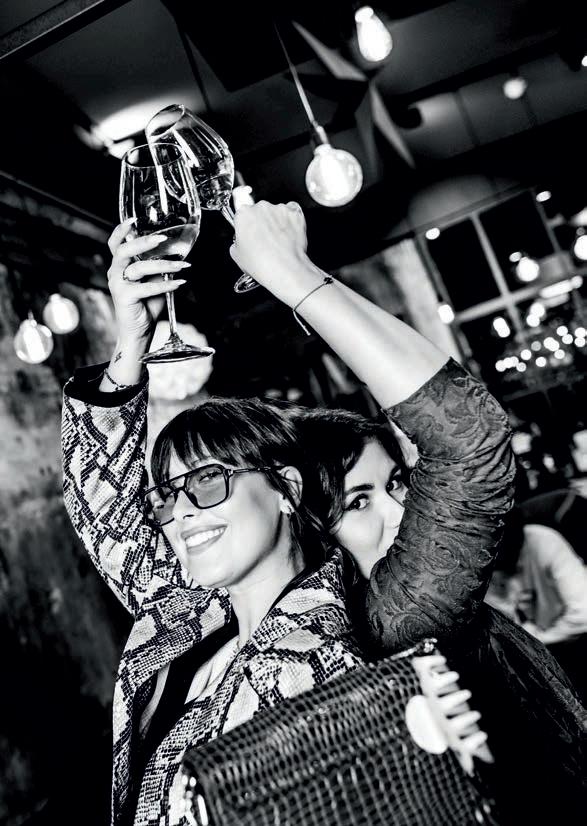
Along with her partner, Josh, and collaborator, Shahzad, the players on the album were mostly rounded out by those closest to her – her twin sister and Pascal Pinon-bandmate Ásthildur Ákadóttir played piano on much of the record, while the strings (sparse but significant) were rounded out by Gyða Valtýsdóttir and Viktor Orri Árnason. The result of the album is, simply put, beautiful. With songs ranging from hypnotically sensual, intensely heartbreaking, and refreshingly motivating, it is a decidedly cohesive collection. Like walking into a meticulously curated exhibition. In a museum.
Despite accidentally (or subconsciously) falling on the language of visual arts many times as we chat, Jófríður does not see herself as a curator, but that it makes some order out of the chaos. “It's a way to deal with it,” she says. “The more you are inside of it, the more you have to put your understanding into it. I didn't used to be like that either. That's also something that's more recent, kind of questioning and analysing, whereas music is very intuitive and a very non-tangible thing. But I think that this is about coming to terms with the process. Now I feel a lot more comfortable going forward, because I kind of know how I did it. That’s the way I was dealing with that dilemma.”.

I think when you're young and you're just starting out, and maybe making your first record or your first song, you have this sense of urgency, because it's like, ‘This is my moment, this is my manifesto, this is who I am.’
WORDS Francesca Stoppani
IMAGES Jenny Retschkowski
These different tastes combine to form a unique signature sound, as distinct as the band’s uniform of white jumpsuits, which serve as another standout feature of their live performance. Funny enough, they were inspired by the jumpsuits worn by the staff at a minigolf place in

If anybody left or had to leave, it wouldn’t be the same. Being in Krownest is fucking awesome! It’s the most fun ever!”
“Hardcore music for hardcore people.” That’s how Gummi and Óttarr, bassist and guitarist of Krownest, describe the band they formed in late 2019. These young beasts – the band has an average age of 20 – just won the Wacken Metal Battle competition held at Gaukurinn on April 22, qualifying to play at the Wacken Open Air festival in Germany this August.
Sitting down for a breather after their national victory, Gummi and Óttarr told me a bit about their winning performance, their hopes for the trip to Germany and what you really need to know about Krownest.
MINIGOLF IS HARDCORE AF Krownest draws influences from a range of genres – nu-metal, death and black metal, to name a few. “I’m quite into grindcore, while Óttarr is more into death metal,” says Gummi.
Reykjavík where Óttarr used to work. They liked the staff uniform so much that they contacted the place to find their jumpsuit supplier.
PLAYING WITH NO PRIOR KNOWLEDGE
“When I started playing in Krownest, I actually had no knowledge of playing metal. I didn’t even listen to it,” Óttarr explains. “Krownest was really built from scratch. We learned to work and play with each other. If we have to practice when somebody is missing, it doesn’t feel the same.”
“The foundation of the band is friendship,” says Gummi, who won an award for the best bass player at Músíktilraunir in 2021, but wasn’t even a bass player when he joined the band. “We’re all best friends.

Krownest has a complicated history with the Wacken Metal Battle, having competed in 2022 and it not going so well. “It went horribly,” Gummi admits. “We had so many technical difficulties that hindered our performance.”
“My tuning wasn’t working.” Óttarr adds. “We were late for soundcheck – we thought – but then we were early. One of the guitars got completely cut out and we had to get rid of it and the vocalist couldn’t play it. At that point, our morale was massively down and we were just really stressed. We did the best that we could in that situation. I still think that we learned a lot from it and made a strong comeback. We definitely knew what could go wrong.”
When Krownest started playing at this year’s battle, it was clear they were going all out, jumping around for 30 minutes straight. “We still can’t believe that we won,” Óttarr exclaims. “I was so excited and full of adrenaline that I accidentally bumped into a microphone on stage. I had blood spilling from my face, and I didn’t even notice until after the performance,” he says.
“Personally, I really enjoyed Merkur’s performance,” Gummi adds. “I was also quite intimidated by False Majesty. They were extremely technical.”
Krownest practiced consistently and relentlessly in preparation for this year’s Wacken Metal Battle. “It takes time to find confidence on stage,” they admit. “The secret is love, dedication, hard work, effort and, most importantly, blood, sweat and tears. We’re gonna bring all of our energy and pack it into 20 minutes
clothes as nights in the tent get pretty cold.” Surely, it’s nothing a couple of extra jumpsuits wouldn’t fix.
MEMES? YES PLEASE!
Even before going to Germany, it seems Krownest’s fame has reached new heights with their very own meme page. The best part? No one knows who’s behind it – but the guys have their suspicions. Either way, it’s clear that Krownest’s influence knows no bounds, not even in the murky, meme-filled depths of the internet.
If you missed Krownest at Gaukurinn and you won’t make it over to northern Germany this August, you can catch the band at Reykjavík Deathfest in September. And keep your eyes peeled for news about other performances and new releases.
“We have a bunch of material that is ready to go. We can’t sign any contracts right now because of Wacken.
for the performance in Germany,” says Gummi. “We’re ready to rise just like Múr did last year. Múr members are also some of our best friends, so we’re gonna have a lot of guidance from them. So far, they have advised us to bring warm
There are rules in the competition that say we have to wait until after the festival,” Gummi explains. “Anyway, we are here to stay,” they both agree. “Even if you don’t like this kind of music, come and see us. You might be surprised!”.
I was so excited and full of adrenaline that I accidentally bumped into a microphone on stage. I had blood spilling from my face and I didn’t even notice until after the performance.
The secret is love, dedication, hard work, effort and, most importantly, blood, sweat and tears.
Walking through the lush landscape of Nanna’s debut solo album

WORDS Nanna Bryndís
Hilmarsdóttir & Jóhannes Bjarkason
IMAGE Supplied by Nanna
really know each other beforehand, so it appears Úlfúð owes a pint to Mr. Zuckerberg. A pint of blood, of course.
FROM (UN)HOLY THEMES TO APOCALYPTIC SOUNDSCAPES
On May 5, Nanna Bryndís
Hilmarsdóttir released her debut solo album, How To Start A Garden
In this issue’s cover feature, Nanna gives us a closer look at her creative process and the feelings of solitude that influenced the album – her first solo venture in the wake of achieving global superstardom with the indie-folk group Of Monsters and Men. Here Nanna walks us through How To Start A Garden track by track.
HOW TO START A GARDEN
I had just come home from a tour early in 2020. There was this apocalyptic feeling in the air around that time and I was thinking about who I’d choose to see if the world was ending. The lyrics feel like time travelling to me, going from reminiscing about life before and wondering what the next step is. Viktor Orri played the beautiful strings that you can hear on this track and throughout the album.
SPUTNIK
“Sputnik” is a song about being in the unknown with someone you love. There was a point early in the record-making where I spent a lot of time alone by the screen, programming, manipulating and piecing together these parts. I was figuring out what kind of a record I wanted to make and this way of writing felt exciting and different from how I usually write.
CRYBABY
“Crybaby” was recorded between Iceland and Aaron Dessner’s Longpong Studio in Upstate New York. The great Valgeir Skorri Vernharðsson (Mammút, Celebs, Kvikindi) came by the studio one day and I had him play drums on this track.
DISASTER MASTER
“Disaster Master” takes place on a summer night, when the sun doesn’t set. It’s about embracing chaos and worried thoughts. I’m practising thinking less.
THE VINE I had just moved into a new house and, as a celebration of new beginnings, Raggi sent me a demo of himself playing the piano. It sounded beautiful and the lyrics and melody came very naturally. I imagined a vine that twists itself and gets tangled. Like how sometimes life gets a bit complicated, but it’s harder to fight against it than just seeing where it takes you.
GODZILLA
“Godzilla” is recorded in my cabin with Bjarni Þór Jensson and Ragnar Þórhallsson. We had a minimal setup with us and the idea was to capture the feeling of being up there. It’s a song about connection.
BLOODCLOT / ANDVAKA
“Bloodclot / Andvaka” is the oldest song on the album. I have a very distinct memory of having a sleepless night in New York in 2019 and working on it. “Towers that block the sun, this city it feels like the movies,” is New York.
MILK
I worked on “Milk” with Aaron Dessner. We were going through old demos of mine to see if anything caught a spark. Aaron helped me connect to the song again and brought life back to it. I’m very happy we were able to figure this one out, it would have still lived in the dusty demo drawer.
IGLOO
“Igloo” is a late night winter walk, when you are not ready to go home just yet. Light posts light up a dark street and frosted car windows. Igloo holds the record of having the most versions recorded. Maybe I’ll release others in the future.
VOYAGER
“Voyager” is a song I recorded with Josh Kaufman at Dreamland. The room sounds beautiful so we sat across from each other with our guitars and let the room work its magic. It’s about when you can’t help but look for trouble.
SEABED
I had a really great time with this one. I love finales. Especially ones that leave you with more questions than answers. I found myself singing in Icelandic at the very end of the song and it felt very soothing. It’s a little ghostly lullaby..
Have you ever woken with a feeling of existential distortion? My haunted friend, have I got good news for you. Of Existential Distortion, the explosive new album from extreme metal band Úlfúð, might just be the tincture for your tortured soul.
For the latest Filthy Interview, I caught up with Breki and Siggi, vocalist and drummer of Úlfúð, respectively, to discuss the band and the new release.
THE ADVENT OF SIGGI Úlfúð was founded in 2015, but it was two years later that Breki says “things got serious.” That’s when Siggi joined the band and its identity really took shape. “Through the years we have changed a few members. These changes have always been drama-free, sadly,” says Breki with a grin shaping the corner of his mouth.
“I found out that Úlfúð was looking for a drummer in the way Icelanders find out about most things – on Facebook,” Siggi recalls. They didn’t
Úlfúð recorded their first EP, First Sermon, in 2018. It was a selfpublished limited cassette release through Metal Defiance. “The production process for Of Existential Distortion was definitely longer than for our first EP,” says Siggi. This time around they aimed at creating a particular ambiance – a more atmospheric, immersive and complete package. “We’ve grown a lot and now we know exactly where we want to be soundwise,” adds Breki.
Úlfúð began recording Of Existential Distortion in 2020 and it was published through the American label Dark Descents in 2021.
DOES BRIAN COX LISTEN TO EXTREME METAL?
The title of the new release seems cryptic and obscure. Before I fell into an existential crisis, Breki – who is also the lyricist of Úlfúð – pulled me back from the brink. As it turns out, it alludes to a black hole. “The idea of the title came to me after attending a Brian Cox lecture in Harpa. He was talking about black holes and how the light would get distorted during their creation process.”
IT
“I really enjoyed the recording process,” states Breki enthusiastically, “but the worst part was waiting for it to finally be out. I just wanted to know what people thought about it and see their reactions. I had a hard time”.
“Often the songs are quite flashed out,” Siggi laughs. “For this album, we all shared ideas and tried different things, but sometimes we went in a circle.” Writing, trying things out, updating and producing something within their creative confines took time.
According to Siggi, they now have around one and a half albums worth of material. “Our next album is probably already written. One of the upsides of the pandemic is that we had a lot of time and we used it to work on new material.” Now the plan for Úlfúð is to take their music as far as it can go..
Catch Úlfúð at Gaukurinn on May 6 The band will also play Reykjavík Deathfest, happening September 29 to 30.
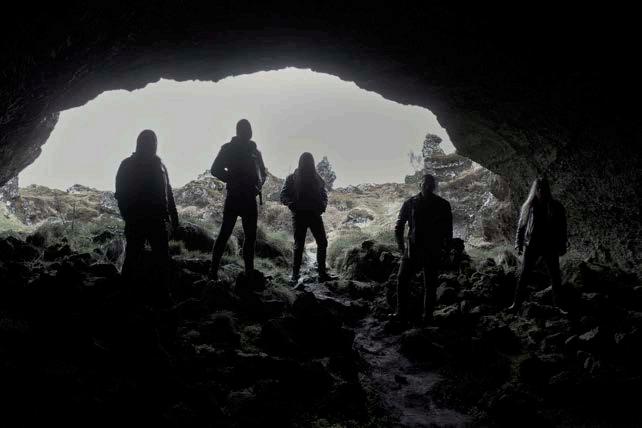
Grapevine staffers make their Eurovision predictions

WORDS The Reykjavík
Grapevine Eurovision Appreciation Club
IMAGES The Internet
The Austrian representatives this year take the Eurovision tradition of sneakily mentioning random famous people and kill it! According to the lyrics, the song is actually written by the ghost of Edgar Allan Poe who possesses the songwriter. The word “Poe” is uttered more than 60 times over the course of a song that clocks in under three minutes, serving as a kind of beat to the chorus. Nowhere but Eurovision would this work. HH
Happy hour / 4–7pm
Beer / Wine / Cocktails
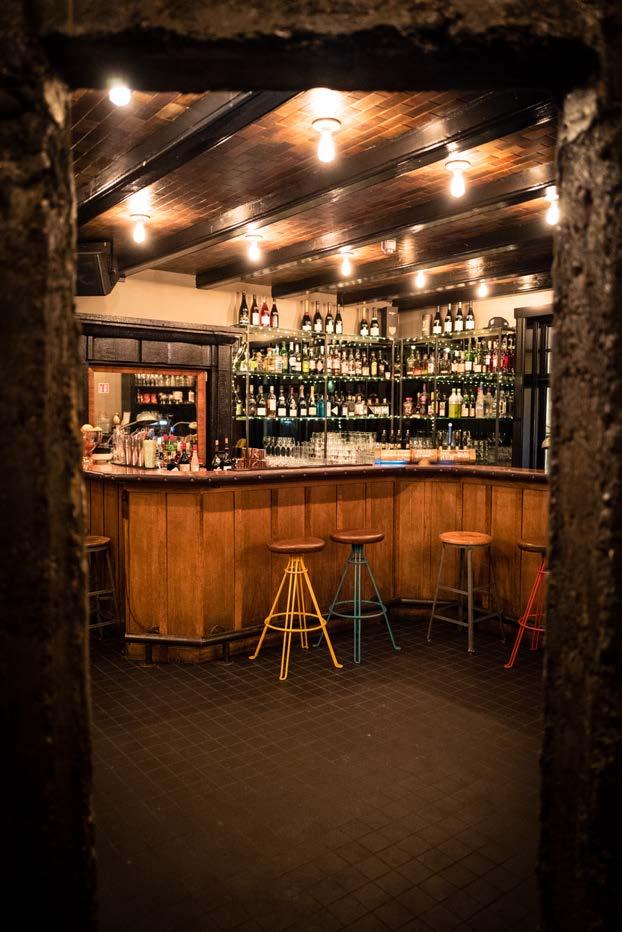
If the bookies are to be believed, Eurovision is returning to Stockholm in 2024 – the winning title is all but stuck on Loreen like a tattoo-oo-oo. But we at the Grapevine like to root for the underdogs. And compared to Loreen, who last won the continent’s most important song contest for Sweden back in 2012 with her smash hit “Euphoria,” literally every other performer is a statistical underdog.
Here’s who we’ll be racking up our mobile bills for once the telephone voting lines open at the Eurovision Song Contest grand finale on May 13
Käärijä
“CHA
FINLAND
Come for the aggressive techno beats, stay for the iridescent shoulder pads. Finland seems to do many things right – their education system, public saunas and now their 2023 Eurovision contribution. Before looking up the lyrics, I was fine with thinking the song was about doing hard drugs and ending the night in a fistfight dressed like a sexy clown. Turns out he‘s mostly singing about drinking Piña Coladas. JB
TVORCHI
FRANCE
I’m still getting over Barbara Pravi being absolutely robbed in Rotterdam in 2021, so another solid offering from France this year was quick to rally my support. La Zarra’s “Évidemment” starts out with a sultry tango rhythm before the beat kicks in, transforming it into a danceable power ballad that the judges will obviously be scrambling to award their “douze points.” A La Zarra win for France will also be a de facto win for Canada – the Montreal native is the sixth Canadian to grace the Eurovision stage. Is La Zarra getting my vote? Évidemment. CF
Teya & Salena
“WHO THE HELL IS EDGAR?”
AUSTRIA
Including names of famous people in Eurovision songs was a way for non-English speaking performers to make the larger European audience understand at least ONE word of their song back when contestants had to sing in their native tongue.


“HEART OF STEEL”
UKRAINE
Call me biased, but I am truly rooting for TVORCHI this year. And not in the sense that they should win. Chances of winning two years in a row are always low and, frankly, we don’t need another party we can’t host in our own house. But it’s exciting how this electronic duo from a provincial town has been making waves in the music scene. Straight out of medical university and onto a stage in Liverpool, TVORCHI proves that Ukrainian music doesn’t always need to heavily rely on folk references. IZ


MOLDOVA
There are always a couple of countries that get inspired by the winners of the previous year and try to compete with the same elements. This year, Moldova brings us the flute techno that propelled Ukraine to victory. Not a bad song, actually. Perhaps better than the inspiration. It’s a bold move because, as a strategy, it is doomed to fail, ridiculing the contestants into oblivion. But it is the true underdog move and I applaud Moldova for boldly going where others have already stumbled. Slow clap styles. AJ
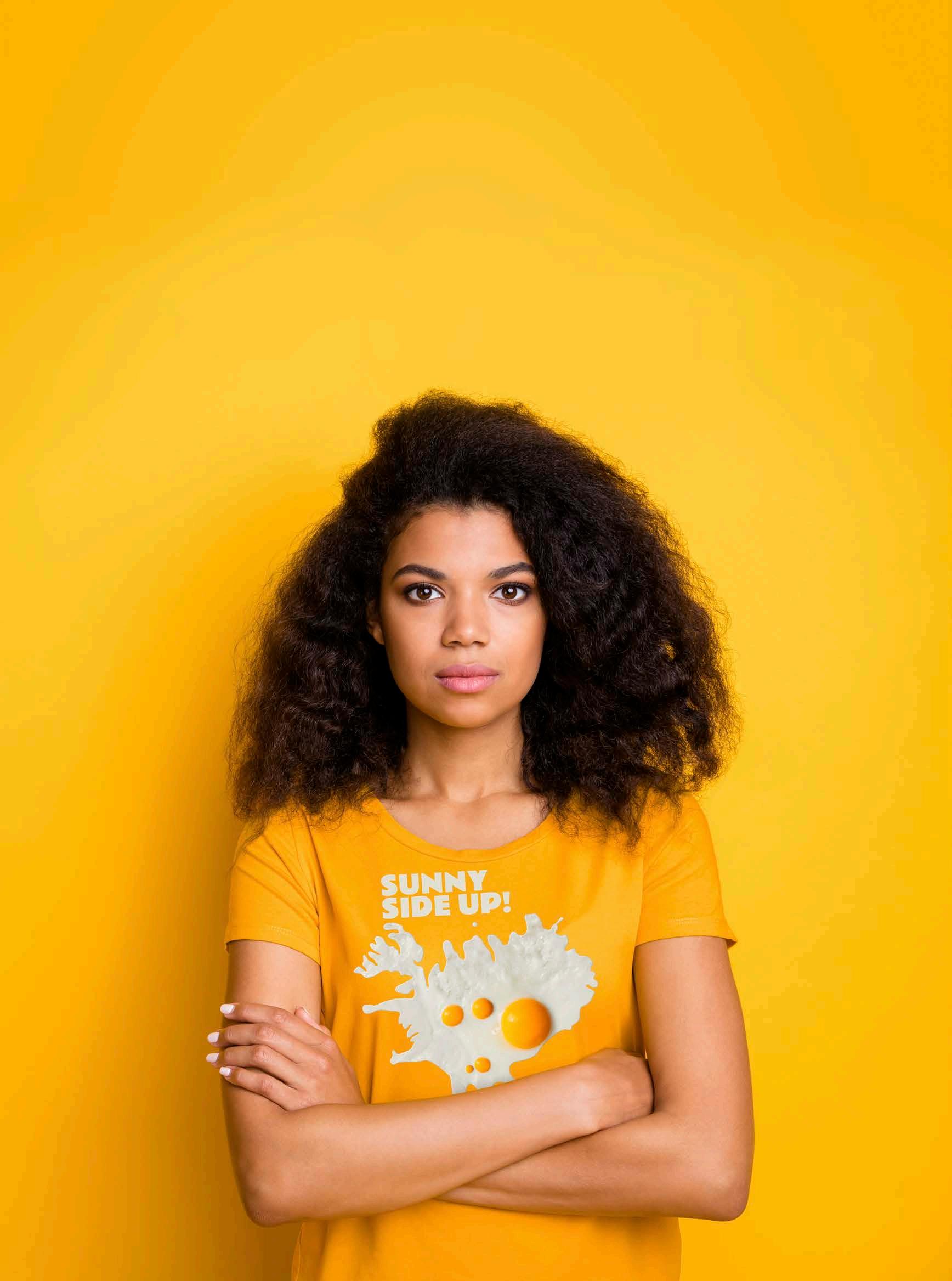

blast. I tried to practice my German with the guide as we rode, while my colleague and the Americans chatted away at the back. But honestly, who needs conversation when you’ve got scenery like this?
As we made our way up the mountains, the path became steeper and , but the horses were troopers. Our guide regaled us with stories f the geological features we passed, like one rock that would bring either luck or misfortune depending on the music you heard in its presence. And at the top of the hill, we even got
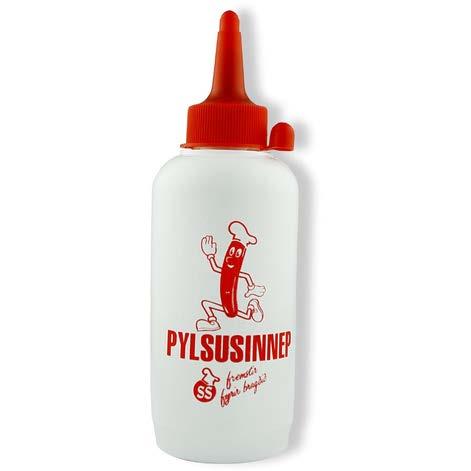

a photo op with a mountain in the shape of a heart. My colleague finally got his wish and got to gallop up a steep hill, while I tried to keep up with an American girl in our group who was suddenly a pro rider. It was like she’d been born on a horse, while my colleague looked like a newborn foal trying to stand up for the first time.
All in all, it was an unforgettable experience. Riding an Icelandic horse through the stunning countrye nothing else on earth. It’s a little bit like flying, a little bit like dancing and a lot like pure joy. So if you ever find yourself in Iceland, do yourself a favour and go for a ride on one of these amazing creatures. Who knows, you might just find your new best friend. It only costs you 448.953 ISK (horse not included) to bring it back home with you..

16:04
WORDS Iryna Zubenko & Gitte Van der Meersch IMAGE Art Bicnickversion of Disneyland, the food hits the spot and we even catch a glimpse of local Scouts marching around town to celebrate the start of summer.
14:56
07:18
“Are we going somewhere?” – our phones buzz with a notification at dawn. It’s sumardagurinn fyrsti, or the first day of summer, a public holiday celebrated annually on the first Thursday after April 18. Staying home on a day like this means willfully increasing our chances of FOMO. Travelling somewhere usually calls for planning – a trait none of us can confidently claim to possess.
Should we do a picnic in Heiðmörk?
Is there a pool like in Akranes, but different? How dangerous is Glymur this time of the year?
We snooze for a few more hours, but a consensus is finally reached: it’s a day off, the weather is great, there is no good reason not to go on a road trip.
12:54
We take our time enjoying a few cups of coffee and playing a round of “whose car is better suited for an adventure?” As soon as we leave Reykjavík, our stomachs remind us it’s time to eat. Used to the abundance of food halls in the capital, we make a stop at Mjólkurbúið Mathöll in Selfoss. While the surrounding area feels like being in a cardboard
We continue our way south, but instead of sticking to Route 1, we veer inland towards the Highlands. The air is crisp and fresh. For the first time in a while, it feels like spring – ahem, summer – is truly here. Snowy fields start to transform into green grasslands and birds, like us, making their first journey in a long time, begin to sing. There is no sign of wind – a truly rare occurrence. Charmed by the idyllic landscape and calmness all around us,
It takes us less than an hour to reach the base of the falls – or at least as close as we were willing to get. The snow and slippery rocks prevent us from going any further. But we aren’t one bit disappointed – we stop at the perfect observation spot where the magnitude of the waterfall pairs with the reflection of sunbeams and voilà, a perfect rainbow, in better resolution than any Bíó Paradís screen could ever offer, appears in front of our eyes.
We instantly regret not bringing a disposable grill, or any picnic food, but decide not to worry too much. We lay on soft moss that feels almost like jumping into a bed full
beautiful trees are now withered, and the branches are bare. But we’re still mesmerised by our surroundings and, as we make the turn onto the dirt road, our car begins to bounce around like a wild animal. This isn’t a well-maintained route – in fact, we soon discovered the road had recently been closed for weeks due to the severe weather conditions. Finally, our car comes to a halt in the middle of nowhere, leaving us stranded in an empty parking lot with no phone coverage. Despite the sense of isolation, we can’t help but feel a little uplifted when we notice a heart drawn in the gravel by previous visitors as a sign of hope.
18:46
19:02
After navigating yet another winding path, we come across a shallow river and decide to brave it by jumping over the scattered stones jutting above the surface. We’re in search of even more natural beauty and we’re not disappointed. As we make our way across the river, we encounter a lost branch, which we affectionately name Evan. Together, we continue on our journey through the endless waterfalls, feeling like we saved a character straight out of Ruth B’s song “Lost Boy.”
20:34
we agree that spring is the season to take risks and decide to cross a river in a car that is not meant for it.
(Disclaimer: Some facts in the story are exaggerated; in this case, that “river” was a trickling spring.)
15:19
Located in Fossárdalur, the innermost part of Þjórsárdalur Valley, Háifoss is the country’s third highest waterfall. The unoriginality of its name says it all: Háifoss literally means “high waterfall.” At 122 metres, Háifoss is shorter than Morsárfoss (240 metres) and Glymur (198 metres). Glymur was our first choice, but the recent news of a tourist death there and unpredictability of weather conditions made us opt for a safer option.

The hike from the parking lot to the waterfall is not a difficult one. The trail is steep and narrow, making good shoes a necessity, but it’s otherwise perfect for lazy trekking.
of plush cushions and listen to the silence: snow-capped mountains, rolling hills, the distant hum of wildlife and sun kisses on our cheeks. How little do the city kids need?!
18:06
With energy to spare, we continue our journey further into the Þjórsárdalur Valley, named after Iceland’s longest river Þjórsá. The place is supposed to look like it’s been ripped straight out of a fairytale. You know, like a movie scene where you’re driving down winding roads and are greeted by the sight of lush green hills and cascading waterfalls. However, as we make our way through the valley, we notice that the scenery isn’t quite as magical as we were led to believe. The once-
The next turn had more beautiful surprises in store for us. Despite not being surrounded by a lush abundance of greenery, we were greeted by waterfalls hiding behind tall rocks and cliffs – all that was missing was a melodic tune.
One of the waterfalls was located in a part of the valley that we could have easily skipped, but it turned out to be one of the most memorable moments of the day. Or should we say, the most humbling moment, because we found ourselves standing at the base of a waterfall that was four times our height. As we gazed up at the powerful cascade of water, we were reminded of just how forceful nature can be. In a moment of curiosity, we attempted to poke a stick through the rushing, but we were quickly jolted back to reality as it was yanked out of our hands and pulled into the deep pool of water below.
By the time we reach the car, the day has already begun its descent towards night. We carefully give Evan an honourable place in the trunk, knowing that he’ll have a better home in Reykjavík. With tired but satisfied smiles, we begin the 1.5-hour drive back home on the same road we drove in on. Despite the long day and a couple unexpected mishaps, we feel grateful for the experiences we’ve had and the memories we’ve made. As the sun dips below the horizon, we know that this adventure will be one for the books – or at least, our journals and this magazine.
21:12
We cross the bridge out of Selfoss, watching a small island and its solitary tree in the rapids below, as the fog begins to thicken, making it difficult to see the road ahead. We turn on our headlights and slow down. Despite the challenges, the ethereal landscape is breathtaking.
So, if you’re wanting to venture out of the city on a day trip, look no further than Þjórsárdalur. With its otherworldly beauty and calm serenity, a one-day trip to this lesser-travelled valley is sure to leave you feeling awestruck – just don’t forget to pack a picnic..
There is no good reason not to go on a road trip.
For the first time in a while, it feels like spring – ahem, summer – is truly here.Feature The chaotic journal of two slothful hikers


’t beating around the bush with its celebration of




When Brút described itself as a seafood-centred restaurant, there were many that had concerns for their prospects. Walk down the high streets of Reykjavík or through any small town in Iceland and you’ll find that “fish restaurants” are dime a

has kept a relatively low profile, surfacing behind the bar at Vínstúkan Tíu Sopar where he conjured up the short-lived but brilliant plate of jamon Serrano with anchovies and cherries, wafer thin slices of cheese with beurre noisette and grated
dozen and even those who don’t claim to be one still serve a fish of the day – more often than now cod, its third cousin ling or the other white fish haddock.


So how different could Brút really be? I asked myself when they opened their doors a year ago. I’ll admit to being both wary and curious, given that chef Ragnar Eiriksson’s last showing at Hótel Holt, which despite a few memorable dishes left diners slightly bewildered. Since then, he
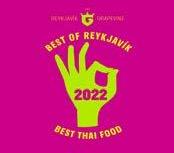
hazelnuts, served alongside delightful conversation. So talk of the same team joining hands for Brút had raised expectations tempered with trepidation.

MORE THAN COD Housed in the recently renovated Radisson 101, with views across Pósthússtræti and Tryggvagata, Brút beckons you off the street with its tall windows and playful graphics. Once inside, the cheery LondonScandi vibe with its discreet details

The fickle fish starts putrefying almost immediately, so there is but a narrow window where its freshness holds steady over the whisper of the ammonia sharpness.
like the wood panelled walls, Wastberg lighting and artwork by celebrated Icelandic artists set the tone for the dining affair to follow.
The kitchen sets the record straight right off the bat. The menu showcases no less than 13 different kinds of seafood! Almost all are local and the selection is on somewhat of a rotation, with varieties like mackerel making an appearance based on availability.
Whelks, aka sea snails (2750 ISK), are cooked till tender in copious amounts of garlic butter, their swirling tapered shells so hot, one has to rein in enthusiasm and properly savor them, escargot tongs and all. Thick, opalesque slices of scallops (3300 ISK) from the cold waters around the Westfjords, are gently marinated in lemon juice, served raw, with fresh halves of tomatoes. A mound of noodled cucumber is dotted with black garlic puree, chunks of cured pollack (3100 ISK) peeking through.
Both the scallop and pollack are almost always shy of a few grains of salt, but that is not the case with the spunky octopus (3100 ISK). Its grilled tentacles are supple enough to swoosh through the salsa roja, the sauce a bright foil to the smoky char.
Skata.
Utter that word in a room full of Icelanders and you can easily separate the lovers from the haters. For the uninitiated, skata or skate, is stingray fermented in its own uric juices. As unappetising as it may sound to some, it is an anticipated festive food in Iceland.
Every December 23, on Þorláksmessa, families will cook the cartilage rich slabs of the bony fish
outdoors – in specially erected tents or a garage, as the ammonia-rich smell clings to every fibre around it and is notoriously hard to get rid off, prompting the “burn your clothes” jokes. You’ll likely see clothing hanging out to air over Christmas for this

I recently tried the plaice “T-Bone” (5600 ISK). I have fond memories of the bone-in plaice at Leifur Kolbeinsson’s precursor to a revived La Primavera, and wondered how this one would compare. It is a beautifully dressed piece of fish,
In lieu of desserts, an equally fun dessert-cheese cart is promised. While I was conjuring up images of a Tickets-esque interactive affair, reality is a far more staid, yet acceptable aha moment of tawny ports, a few cheese and desserts from Gulli Arnar. There is nothing wrong in outsourcing pastries to a baker off-site (given the logistics of hiring a pastry chef), even one as promising as Gulli, but the singularity of mousse based entremets in a variety of gelee, glazes and flavours is in stark contrast to the rest of the menu, which is otherwise built around careful selection of produce and virtually flawless dishes.
GREATEST HITS
instances are dealt with swift competence (like a suspect pollock that was quickly swapped with no fuss). The sides are as spectacular as the mains – it is one of few places where fish and potatoes are more than a sum of their parts.
So much about seafood is centred around the primal pleasure of eating – picking the meat off the bone clean, slurping oysters, peeling shrimp. It is hard not to see that they’re dancing around this sentiment here, one they should, in my opinion, embrace and celebrate with gleeful abandon.
reason. Like many traditional dishes, it is boiled and served simply with butter, potatoes and rutabagas.
The skate (5400 ISK) at Brút, however, is served fresh. The fickle fish starts putrefying almost immediately, so there is but a narrow window where its freshness holds steady over the whisper of the ammonia sharpness. Drenched in butter and capers, the simplicity of the cooking is a testimony of the kitchen’s confidence. This is a dish that would appeal to both the die-hard skata enthusiast and the reluctant alike. Fresh skate is a delectable dance of textures – only the wings of the fish are edible and here the striated, open-fan web of cartilage and pearly white meat yield with a sigh. Delicate and sweet, its flavour is reminiscent of fresh scallops.
Like with the skate, I happily noted that the menu isn’t just championing a variety of seafood, it is also showcasing different cuts and techniques in breaking down the protein. So while there are bone free cuts of filleted fish, most are served whole, or on the bone.
reminiscent of a cartoon chop. With fish this fresh, the shallot cream feels wholly unwarranted. Just the quick pickled tomatoes would do.
For a seafood restaurant, Brút delivers strongly on its vegetarian fare. Pillowy bolsters of buttery spuds (I’m partial to their first iteration of the Parisienne gnocchi, studded with mushrooms rather than the pesto heavy number they are serving now).


The grilled cabbage is weighed down by the dulse-black garlic sauce, even the vegan caviar not helping it lift beyond the cloying sweetness. The grilled zucchini served as a side recently, holds potential as a main. Still, where they shine with vegetarians is with their weekend brunch.
With an award winning wine list, curated by award winning sommelier Manuel Schembri, the wine book is a fun departure from straitjacketed condescension, with sections like “fluffy and delightful” and “plump and reliable.” Attractively priced by the bottle, this is where I’d encourage you to trust the recommendations and let loose.
It is hard to build a menu with just hits, but somehow Brút does just that – at least, most of the time. Service is affable and less than ideal
Refreshing in a sea of unimaginative restaurants with sleepwalking menus championed by bored chefs, puppeteered by investors and formulaic restaurateurs, Brút is a breath of fresh air..
Brút is refreshing in a sea of unimaginative restaurants with sleepwalking menus championed by bored chefs, puppeteered by investors and formulaic restaurateurs.

of the spots atop Laugavegur, the cacophony of tacky fonts, absentee service and cringy tourist baiting sent me fleeing into the welcoming arms of Arabian Taste. The moment I walked in, I was greeted by a symphony of sizzling meats and
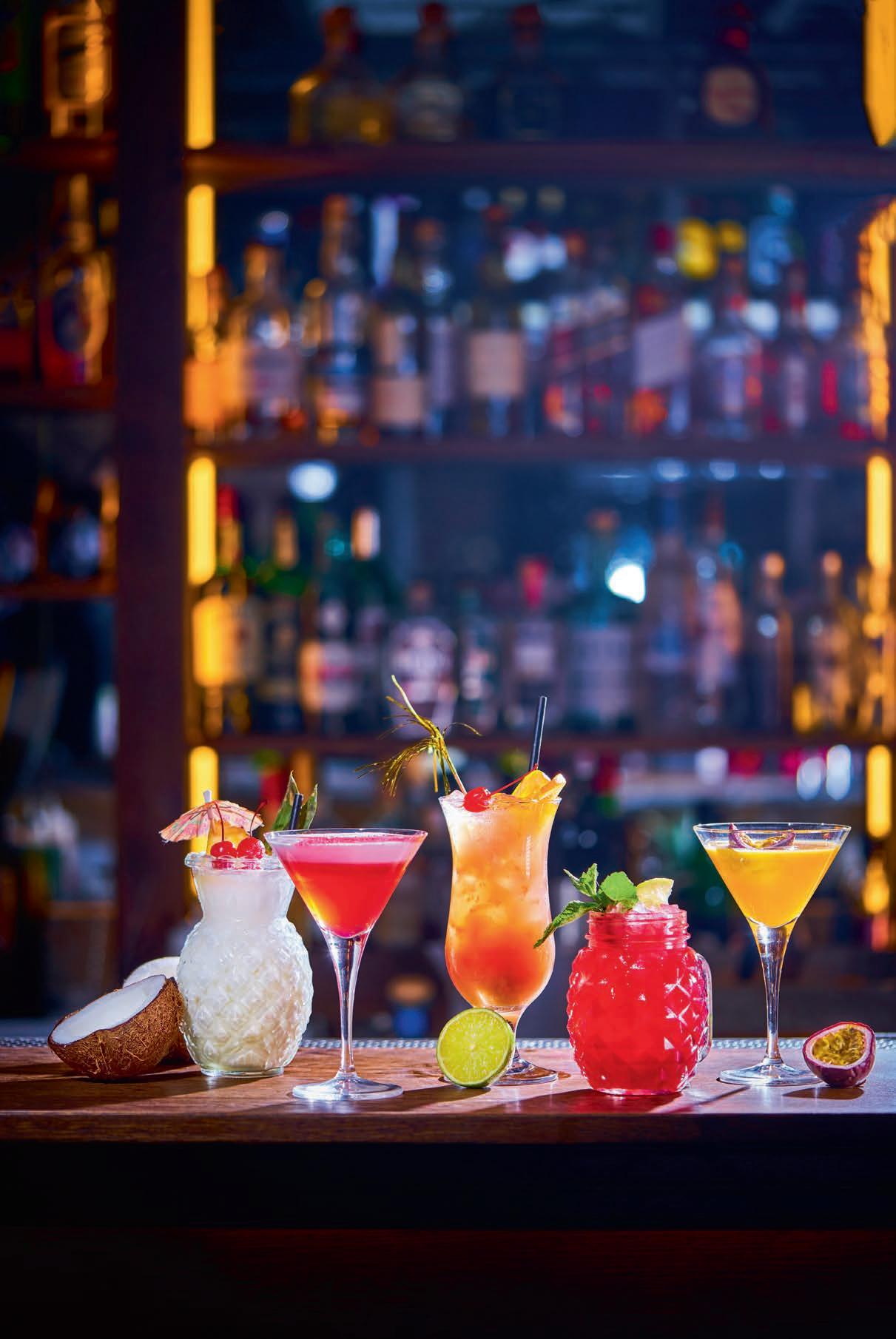
It’s not reinventing the wheel but it will help you roll out of the shop with a smile on your face.
On the vegetarian end of the spectrum we have a baba ganoush that’s unlike any that I’ve tried
a pungent wallop of fenugreek and friendly staff ready to help me navigate their impressive range of Middle Eastern street food.
PICO DE GANOUSH

After perusing the menu for a few minutes, I settled on one of my


before, instead of a creamy purée of eggplant, we get something closer to a smokey pico de galloor an Italian caponata. A finely diced medley of vegetables and vinegar where the eggplant couldn’t really be said to be in the starring role. While it was a bit unexpected, it was

Though the initial idea for this article had been to sample each of the spots atop Laugaegur, the cacophony of tacky fonts, absentee service and cringy tourist baiting sent me fleeing into the welcoming arms of Arabian Taste.
If your bar has a happy hour, email us on events@grapevine.is with the details.
KAFFI LÆKUR
Every day from 16:00 to 19:00 & 22:00 to 23:00 on Tue–Sat
Beer 890 ISK, Wine 1050 ISK.
KOFINN BAR
Every day from 12:00 to 19:00
Beer 600 ISK, Wine 1000 ISK.
KALDI
Every day from 16:00 to 19:00
Beer 950 ISK, Wine 950 ISK.
LOFT
Every day from 16:00 to 20:00
Beer 860 ISK, Wine 950 ISK.
LÓLA FLORENS
Every day from 15:00 to 18:00
Beer 1000 ISK, Wine 1000 ISK.
LUNA FLORENS
Tue-Sat from 15:00 to 18:00
Beer 1000 ISK, Wine 1000 ISK.
Discount or a free appetiser.
PETERSEN SVÍTAN
BASTARD BREW
Every day from 16:00 to 19:00
Beer 600 ISK, Wine 750 ISK.
BÍO PARADÍS
Every day from 17:00 to 19:00
Beer 850 ISK, Wine 850 ISK.
BREWDOG
Wed-Sun from 14:00 to 17:00
Beer 990 ISK, Wine 990 ISK.
BRUT BAR
Every day from 16:00 to 19:00
Beer 700 ISK, Wine 600 ISK. 2F1 on wine and beer on tap.
COOCOO'S NEST
Tue-Sat from 15:00 to 18:00
Beer 1000 ISK, Wine 1000 ISK.
Discount or a free appetiser.
DILLON
Every day from 14:00 to 19:00
Beer 600 ISK, Wine 850 ISK.
FJALLKONAN
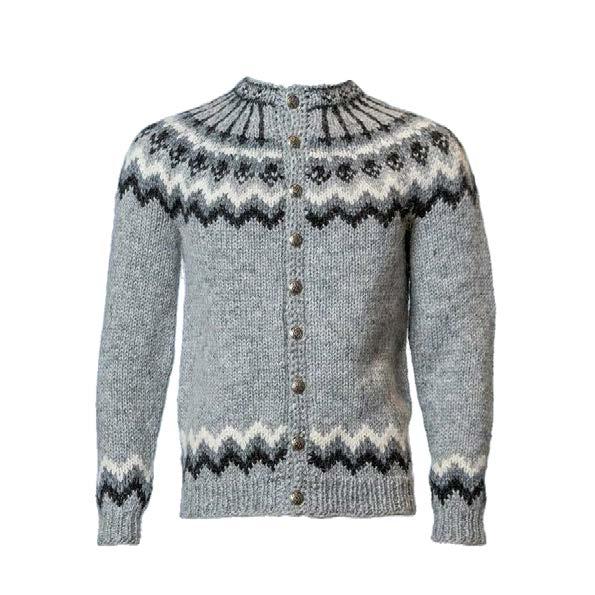
Every day from 15:00 to 18:00
Beer 990 ISK, Wine 1190 ISK.
FORRÉTTABARINN
Every day from 16:00 to 18:00
Beer 800 ISK, Wine 900 ISK.
GAUKURINN
Every day from 16:00 to 21:00
Beer 800 ISK, Wine 1000 ISK.
IÐNÓ
Every day from 16:00 to 19:00
Beer 850 ISK, Wine 850 ISK
JÖRGENSEN KITCHEN & BAR
Mon, Tue, Wed 16:00–18:00, Thursday from 16:00–20:00, weekends from 12:00 to 18:00
Beer 750 ISK, Wine 900 ISK.
JUNGLE COCK TAIL BAR
Every day from 16:00 to 18:00
Beer 900 ISK, Wine 1000 ISK
Cocktails 1600 ISK.
Every day from 16:00 to 19:00
Beer 850 ISK Wine 1100 ISK.
PRIKIÐ
Every day from 16:00 to 20:00
Beer 700 ISK, Wine 1000 ISK.
PUBLIC HOUSE
Every day from 15:00 to 18:00, then 23:00 to 01:00
Beer 890 ISK, Wine 890 ISK
PUNK
Every day from 16:00 to 18:00
Beer 850 ISK, Wine 850 ISK.
UPPSALIR BAR
Every day from 16:00 to 19:00
Beer 750 ISK, Wine 900 ISK.
RÖNTGEN
Every day from 16:00 to 19:00
Beer 800 ISK, Wine 900 ISK.
SÆTA SVÍNIÐ
Every day from 15:00 to 18:00
Beer 990 ISK, Wine 1090 ISK.
SKÚLI CRAFT
Every day from 12:00 to 19:00
Beer 900 ISK, Wine 900 ISK.
Happy hour includes four selected tap beers
SLIPPBARINN
Every day from 15:00 to 18:00
Beer 1000 ISK, Wine 1000 ISK.
SPILAKAFFI
Every day from 17:00 to 19:00
Beer 850 ISK.
STÚDENTA KJALLARINN
Everyday from 16:00 to 19:00
Beer 610 ISK Wine 850 ISK.
VEÐUR
Every day from 12:00 to 19:35
Beer 800 ISK, Wine 800 ISK.
ÖLSTOFAN
Every day from 15:00 to 20:00
Beer 750 ISK, Wine 800 ISK.
Here are some sweet meal deals that’ll fill your tummy and without draining your bank account.
DOMINO’S
Tuesday, pick-up only
Tuesday Special: medium pizza with three toppings: 1.200 ISK all day on.

DRAGON DIM SUM
Every day, except Sunday, from 11:30–14:30
Choice of any two dumpling baskets: 2.190 ISK.
GLÓ
All day, every day
Bowl of the Month: 2.290 ISK.
HAM BORGARA BÚLLA
TÓMASAR
101 STREET FOOD
All day, every day
All appetizers & main courses: 2.050 ISK.
APÓTEK
All day, every day
Soup of the Day: 1.990 ISK.
BÆJARINS BEZTU
All day, every day
Hotdog and soda: 990 ISK.
BRÚT
On Friday, Saturday & Sunday
Bottomless Brunch, including selected drinks: 6.900 ISK. DEIG
On weekdays after 10:00
Poor Man’s Offer: filled bagel, doughnut & drink: 1.850 ISK.
All day on Tuesday
Tuesday Special: burger, fries & soda: 1.790 ISK.
HLÖLLABÁTAR
Every day until 14:00
Lunch Offer: Choice of any sub and soda: 1.995 ISK.
ÍSLENSKI BARINN
All day, every day Soup of the Day: 1.650 ISK.
LEMON
All day, every day
Combo of the Month: large sandwich & juice: 2.195 ISK.
MAI THAI BISTRO
Every day from 11:00–14:00
Lunch of the Day: 1.890 ISK.
Featured
Bankastræti 7
With the nation having just celebrated the official First Day of Summer on April 20 and warmer days finally coming our way (we hope), it makes sense that people want to get as close to the sun as possible. Loft Hostel’s south-facing rooftop patio is a famous place to do just that, especially during happy hour! Enjoy one of the great beers on tap or a lovely wine or spritz while basking in the sun beaming down unimpeded on the deck. And if the weather is lousy or you hate the sun? Well, inside is just as delightful and you can even catch a show. Inside or out, Loft Hostel is a happy place for happy hour.
Happy hours
Every day from 16:00–20:00
NOODLE STATION
All day, every day
Vegetarian noodle soup: 1.100 ISK.
PIZZAN
All day, every day
Combo Pick-up Offer: choice of menu pizza & breadsticks: 50% off.
PHO VIETNAMESE
All day, every day
Pho & wonton soups: 1.890 ISK.
REYKJAVÍK ROASTERS

All day, every day
Breakfast menu & sourdough toasts (various toppings): 580–1.350 ISK.
SHALIMAR
Weekdays from 12:00–15:00
Curry in a Hurry Lunch Special: 1.590 ISK.
SHANGHAI
All day, every day
Combo, choice of three dishes: 2.290 ISK for one; 4.390 ISK for two.
SUBWAY
All day, every day
Sub of the Day: 1.399 ISK for 6”; 1.899 for 12”.
ZORBIAN HOT
All day, every day
Chicken shawarma wraps & falafel wraps: 1.490 ISK.
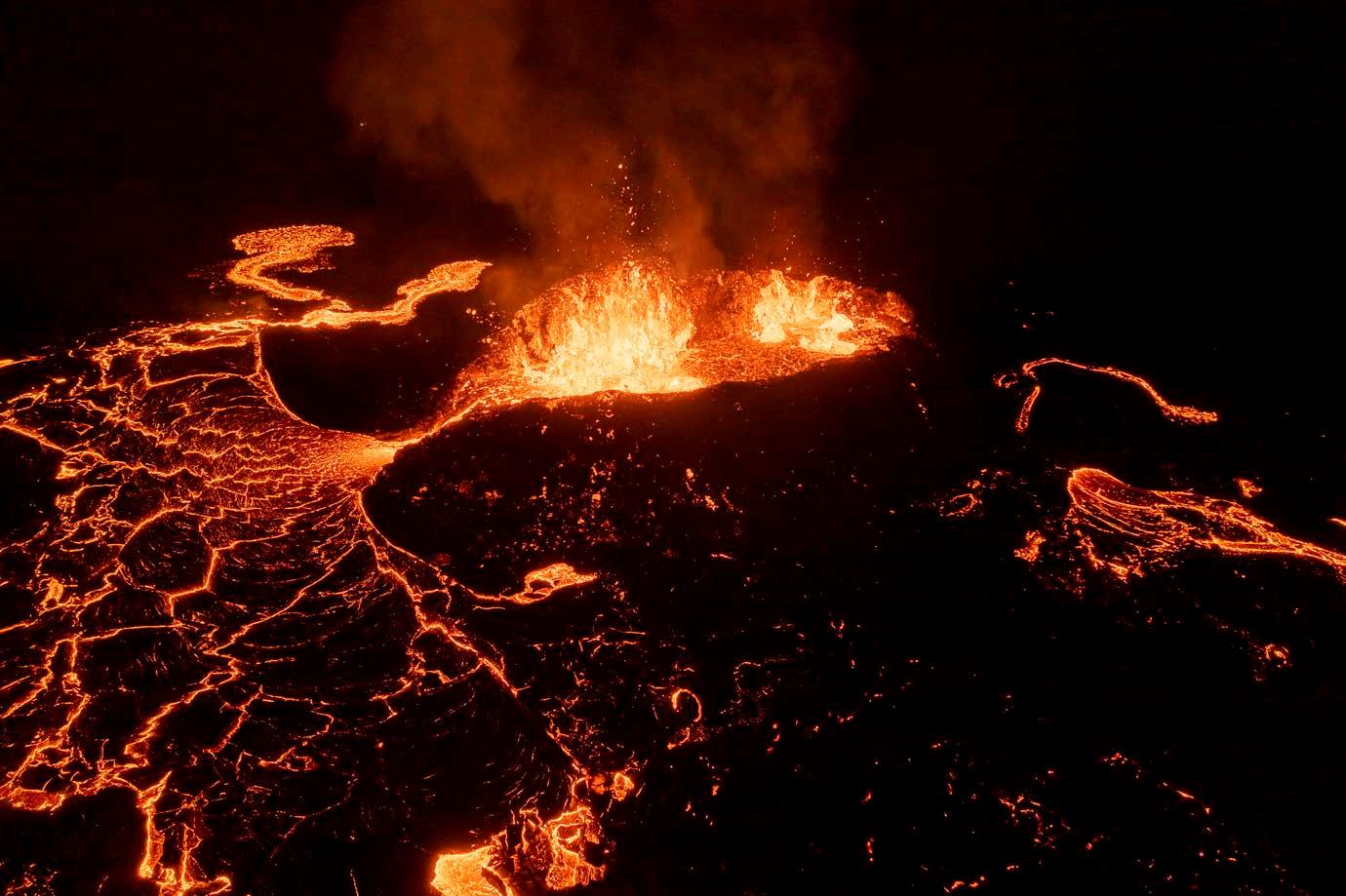
The latest alternate history thought experiment
WORDS Valur Gunnarsson IMAGE Art BicnickLakagígar was around 25 kilometres long and was unlike anything seen before in the country. The volume of lava was the greatest ever recorded and the ash blotted the sun from the sky. A dozen farms were overrun by flowing lava and the only thing that prevented the local church from being swallowed up was the famous “fire mass” of the reverend Jón Steingrímsson, although a river running between the lava and the church might have had something to do with it.
The church was saved but the rest of the country was not. The most destructive effects were due to the ash cloud that hung over most of southern Iceland, including some of the country’s best farmland. This led to the event being known as “móðuharðindin,” or “The Foggy Hardship.” The ash cloud, it turned out, was poisonous.
the fields, it was. Vienna ran out of firewood. In Japan, the rice harvest failed, leading to the worst famine in that nation’s history. There was ice in the Gulf of Mexico and trees hardly grew in Alaska. The oft repeated claim that Lakargígar caused the French Revolution is unfounded, as farming there had recovered before 1789, but it did contribute to the collapse of another ancient regime. Farming in Egypt was particularly badly affected, leading to its eventual breakaway from the Ottoman Empire.
DANISH INTERVENTION
ensured the people’s survival. In Helgi’s scenario, a cold summer ensures a continued famine and as the remaining livestock dies off, there is little hope the population will recover. Large tracts of the north and east are laid waste. People abandon their farms and become drifters. Everything gets eaten until nothing is left. Things go slightly better in the west and south, but the situation is dire.
time, although tracing one’s lineage becomes a major pastime. People of Icelandic descent continue to contribute to Danish culture, one even winning a Nobel Prize for his novel about the struggles of first-generation Icelandic farmers on the Danish heaths.
In late May 1783, earthquakes of increasing force were detected in southeast Iceland, leading many local residents to abandon their turf houses and sleep in tents farther from the source. Passing sailors glimpsed fire in the mountains. On June 8, the eruption proper began. The series of craters known as
This did not immediately affect people so much as livestock. Up to 75 percent of all sheep died, along with 40 percent of cows and 48 percent of horses. The meat barely clung to the animals’ bones and even when the meat was cleaned and salted those who ate it rarely survived. Enfeebled by hunger, people become more susceptible to yet another outbreak of smallpox. Ice floes also started to appear again, blocking the harbours. The population, which numbered 49,000 in 1783, dropped to 39,000 by 1786. The eruption lasted until February 1784 but its effects lingered much longer. And they were even felt much farther afield.
The ash in the atmosphere resulted in an unusually cold winter on the mainland. In Britain, the changing weather led some to believe the end of the world was nigh. For roughly 23,000 Britons who keeled over in
News of the disaster arrived in Copenhagen in early September 1783, almost three months after the eruption began. A ship was outfitted with emergency provisions, but it was only possible to sail to Iceland during the summer months and that window was fast closing. The opportunity was missed and supplies did not arrive until April 1784. By this time the eruption was over but large tracts of land were depopulated. Grass did not grow, either because of frost or ash. Even where it did grow there were few animals to graze upon it. If the population of Iceland was to survive, the livestock would have to be replenished. To this end, a collection was organised in the churches of Denmark and collectors even went door to door to raise funds.
But perhaps the most novel suggestion to improve the lives of Iceland’s inhabitants was the idea of moving them all somewhere else. What if it had been implemented?
EMPTY ICELAND
In an article from 2017, renowned historian Helgi Skúli Kjartansson asks himself that very question. In actuality, just as the famine was reaching its peak in the spring of 1785, a good summer followed and
Finally, the king decrees that the remaining inhabitants be transported to Denmark. Some young women become housemaids in the bigger cities while the young men join the army and navy. Those with education, usually from the University of Copenhagen, find administrative jobs in the capital.
ICELANDIC DENMARK
However, around 2000 of the survivors are brought to the Jutland heaths where previously, German farmers had settled in an attempt to make the area useful and became known as “potato Germans” after their main produce. That attempt was largely abandoned but the hardy Icelanders make more of a go at it, being used to windswept wastelands and enjoying higher living standards in Jutland than at home. The king generously donates sheep and cows and the Icelanders move into the empty German houses and even learn to grow potatoes. Soon they fan out to build separate farmsteads, as they are more accustomed to wide open spaces than towns.
As time passes, the next generation mostly moves to more central areas of the Danish Kingdom, while Danes and Germans from the duchies to the south move into the area now made liveable. This leads to the Jutland Icelanders losing their specific language and characteristics over
But what of Iceland itself? Fishing ships would continue to visit from other parts of the Danish Empire, including Norway, the Faroes and Denmark itself, sometimes even crewed by exiled Icelanders. Mostly they sail in the summer but some elect to stay for the winter to pursue early spring fishing. Meanwhile, survivors from the more remote parts of Iceland, including the Westfjords, who subsisted on bird’s eggs and fish during the famine, would by now have realised that Iceland would not be resettled any time soon. Some would cautiously make their way south to the better farmland once the smog began to clear. They would be joined by stragglers and thieves who had hid themselves in the highlands to avoid Danish ships. Some of the fisherfolk would eventually decide to stay behind, too, taking up residence on the mostly uninhabited island rather than returning to cramped Denmark.
Danish fishing would be brought to a sudden halt in 1807 when war would break out between Denmark and the British Empire, again bringing the tiny population of Iceland to the brink of starvation. When peace would be made at the end of the Napoleonic Wars, Denmark would ask that Iceland be handed back to them but Great Britain would opt to give it to the reconstituted French kingdom in return for exclusive fishing rights in Newfoundland. As a French naval base, the island would go on to play a major role in both World Wars..
Stocking up on all the gorgeous goods of festival participants
WORDS The Reykjavík Grapevine
IMAGES The Internet
We’re smack dab in the middle of DesignMarch. Before running around town ogling all the new products being launched, designs being premiered and innovative concepts being presented we went on a little shopping spree, stocking up on all the goods we’ve been coveting from some of the many designers participating in this year’s festival.
2
290 EUR
II
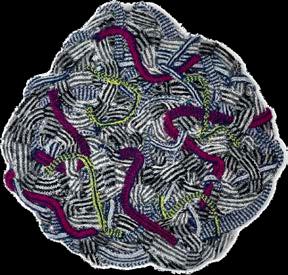
Design,
13.900 ISK
3 Living Objects Special Edition No. 3 Vase from Fólk Reykjavík, available from folkreykjavik.is 35.000 ISK
4 Nourishing Soap with Arctic Thyme Soap from Urð, available from urd.is 2.300 ISK

5 The Wave Top in Sequin Printing Top from Hildur Yeoman’s Breeze Collection, available from hilduryeoman.com or Hildur Yeoman’s boutique at Laugavegur 7 34.900 ISK
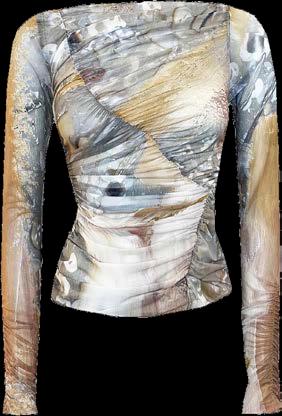
6 Embrace Cotton Blanket Throw blanket from Anna Thorunn, available from Epal at Skeifan 6 13.558 ISK
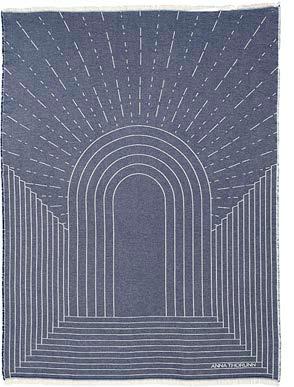
7 Vindur (black) & Dropar (gold) Hand-painted porcelain cups from Inga Elín, available from Inga Elín Gallerí at Skólavörðustígur 5 6.000 ISK & 12.000 ISK

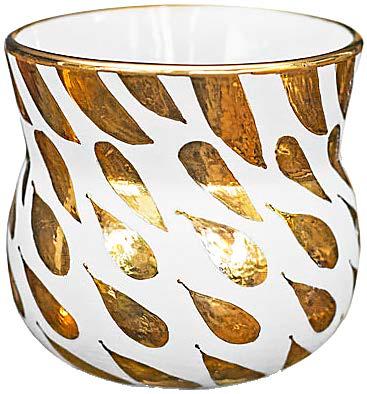
8 Minute Candle Holder
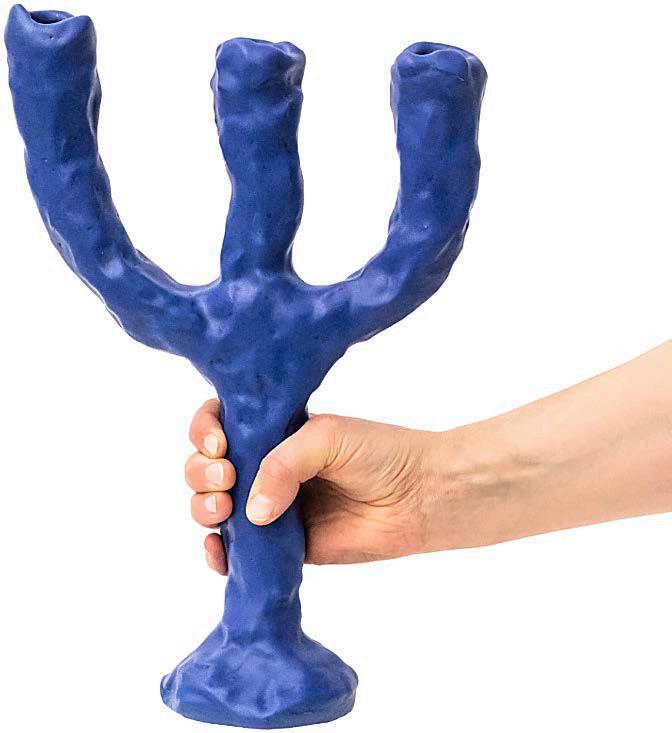
Hand-crafted candle holder from studio Flétta, available from Rammagerðin at Skólavörðustígur 12 32.000 ISK




baller’s wife, so that has put a mark on my life. We have two children. I think we're a typical Icelandic family: both working, children in school, we have a dog, two cats. I have a pretty
onsidering you've travelled a lot, what ’s your dream holiy destination?
ravelling for me, it's just like, I'm so done with it. But Iceland is the place. I haven't travelled around Iceland that much. I need to see more of my own country. I want to begin with that.
hat's the last production f any kind of media that left a big impression on you?
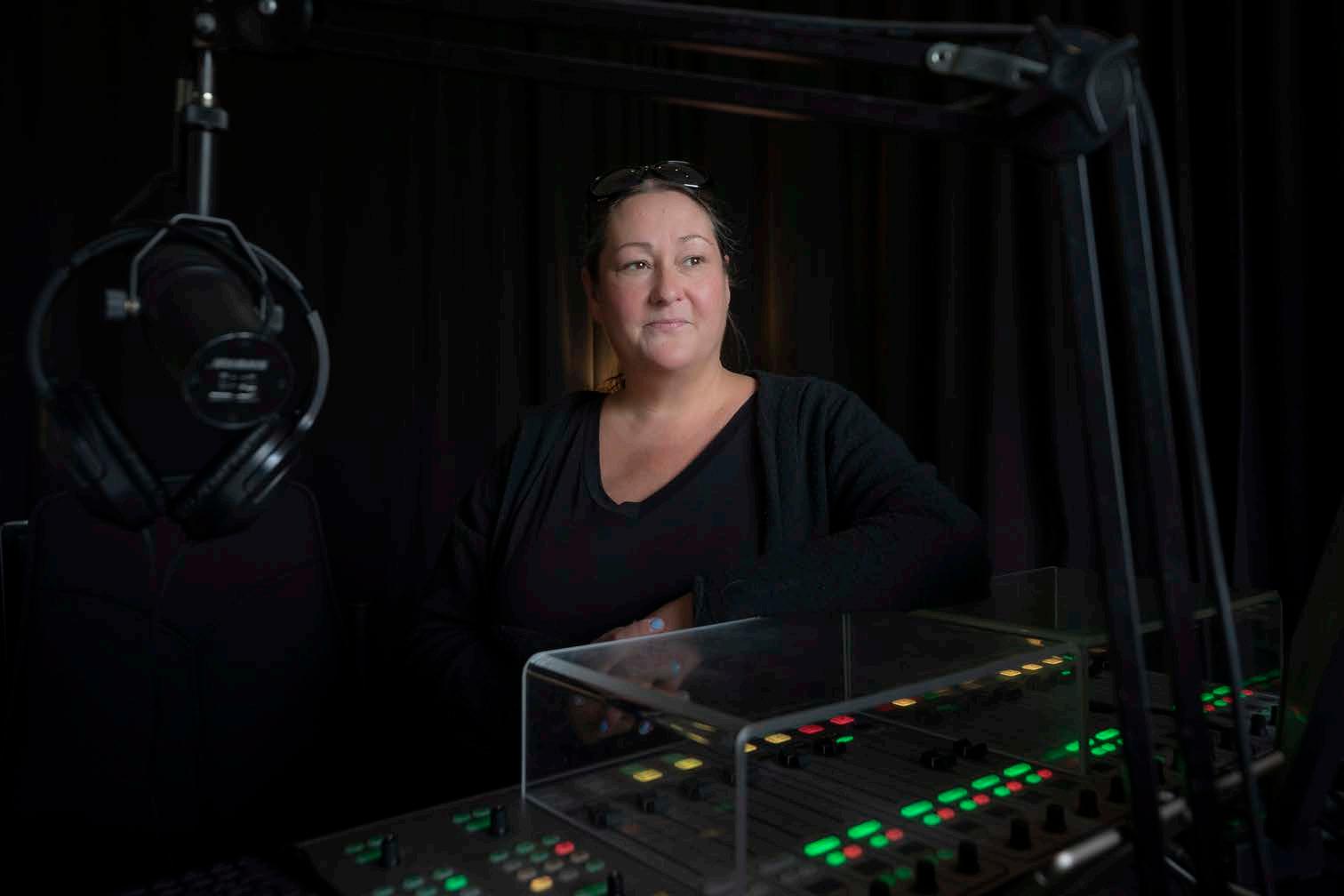
That's difficult. Well, I can say the Nordic noir genre, that’s really impressive. For example, Exit, the Norwegian one. It was really impressive. The characters, they're brilliant, both hating them and loving them at the same time. I always love Söngvakeppnin at RÚV. I used to take part in producing that and watching it getting bigger and bigger every year is wonderful to see.
oes the quality of a producion affect your appreciation f a show?

In some cases, yeah. I have to admit I have not worked in scripted shows, so that's not my area. But it changes my perspective with non-scripted at least, because I'm always watching it from the producer’s perspective. I'm looking for things or I can see, you know, what they should have done better. But it's always easy to say when you're just watching. I'm not saying I could do it better, but it's easier to say..

Reykjavik
T
REYKJAVÍK GRAPEVINE STAFF’S FAVOURITE LUNCH BREAK
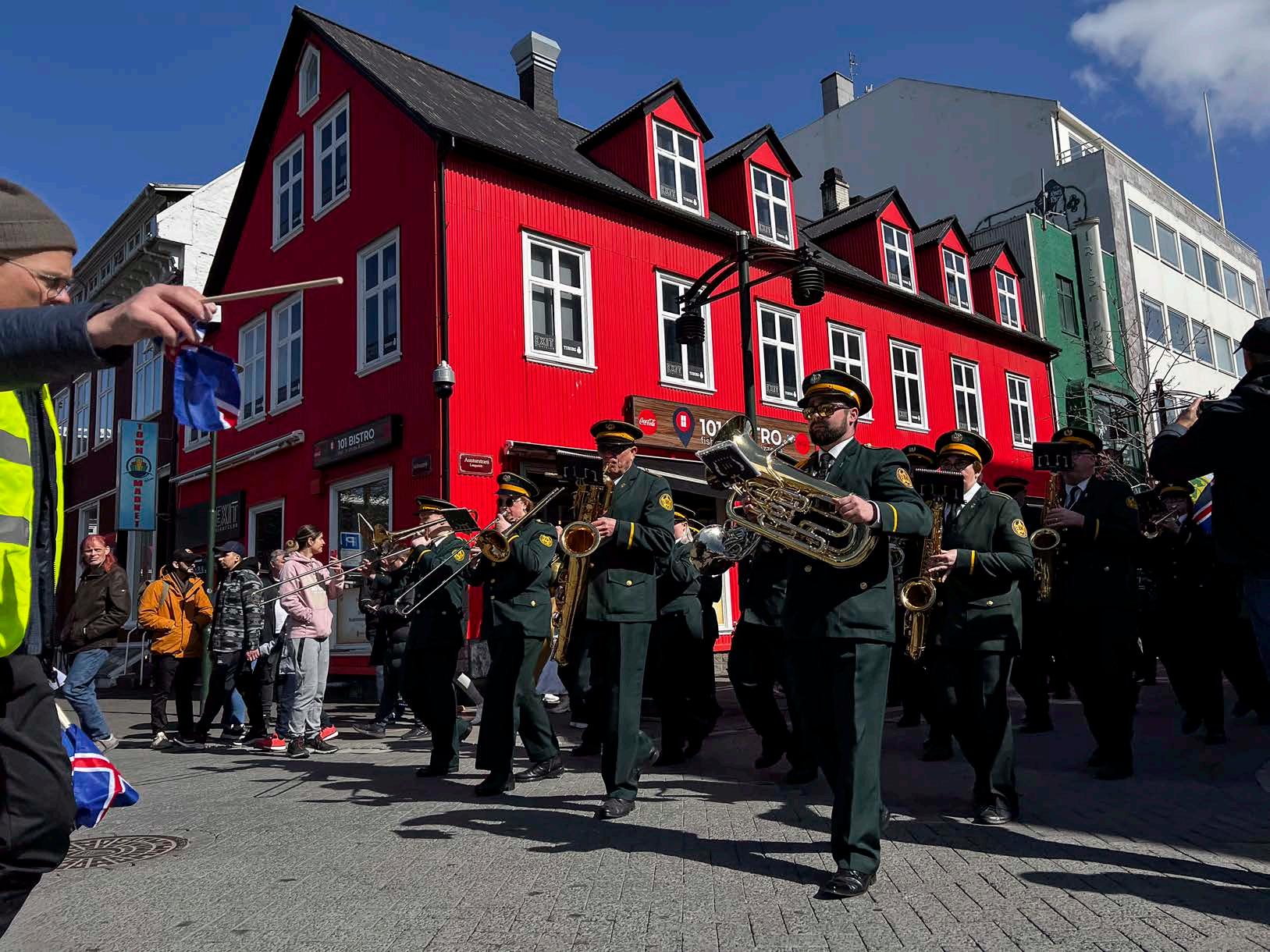
Given that the office is close to the harbour, we usually have to fight it out with the seagulls over who gets he biggest crumb of cinnamon roll or piece of pylsur that some kindhearted and easily entertained tourist tosses our way. Nobody said writing during increased inflation was easy. I have a particularly vicious rivalry going on with a one-eyed gull I named Goliath. The feathery bastard likes the same pastries I do, e’ll see who gets the last laugh.
WHAT’S THE PREVAILING LOCAL OPINION ON ALL OF THE ELECTRIC SCOOTERS IN DOWNTOWN REYKJAVIK?

Although they can be considered an invasive species to the local pedesment, home -grown and
then set out to intermingle with the natural surroundings, the electric scooters of Reykjavík have shown a remarkable adaptability. These days they can be found cohabitating with the gaggle of geese, as well as the ducks and swans in the pond. Some have acclimated to seawater and share nesting grounds with flocks of seagulls. The more land-bound scooters can often be found stretching out on sun-warmed concrete along with the cats of Reykjavík. Local residents seem to have mostly become accustomed to the scooters, stepping over them confidently without disturbing them. Although we need to keep an eye on the reproduction rate and how a further increase in the scooter population post-spring may influence the shared living environment.
WHY IS PIPPI LONGSTOCKING LINA IN ICELAND?
Uhm, I think you mean Sigurlína Rúllugardína Nýlendína Krúsimunda Efraímsdóttir Langsokkur. Get it right. But yeah, “Pippi” isn’t really a name here and Iceland is sort of known to change names around a bit to fit the language. Everything gets translated. Everything. Which, yes, can cause an eyeroll here and there but who doesn’t love a little alliteration? Let literature last long, lyrically and lively leaping like a limber lizard off the page..
Last Look IMAGE Art BicnickBefore Kleppur, the mentally ill were kept in cages or boxes, or on a leash.
Read up on Iceland’s first psychiatric hospital on page 10
I like the calmness. Before all this success I was just an emo kid.

Nanna opens up about her latest solo album and the art of being alone on pages 12-14
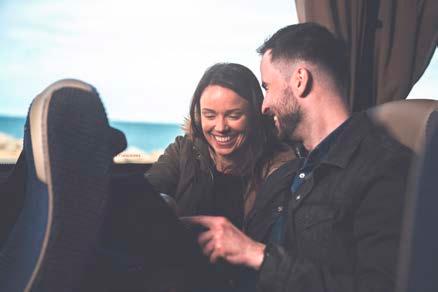
It gets cold in the winter in Berlin, but in Iceland, it’s always cold. It’s always sweater season.
Ýr Jóhannsdóttir discusses her biggest exhibition yet on page 16.
The fickle fish starts putrefying almost immediately, so there is but a narrow window where its freshness holds steady over the whisper of the ammonia sharpness.
Celebrate Brút’s seafood options on pages 32-33. The volume of lava was the greatest ever recorded and the ash blotted the sun from the sky.
What if Iceland had been consumed by a volcanic eruption? Read the hypothetical possibilities on page 36.


